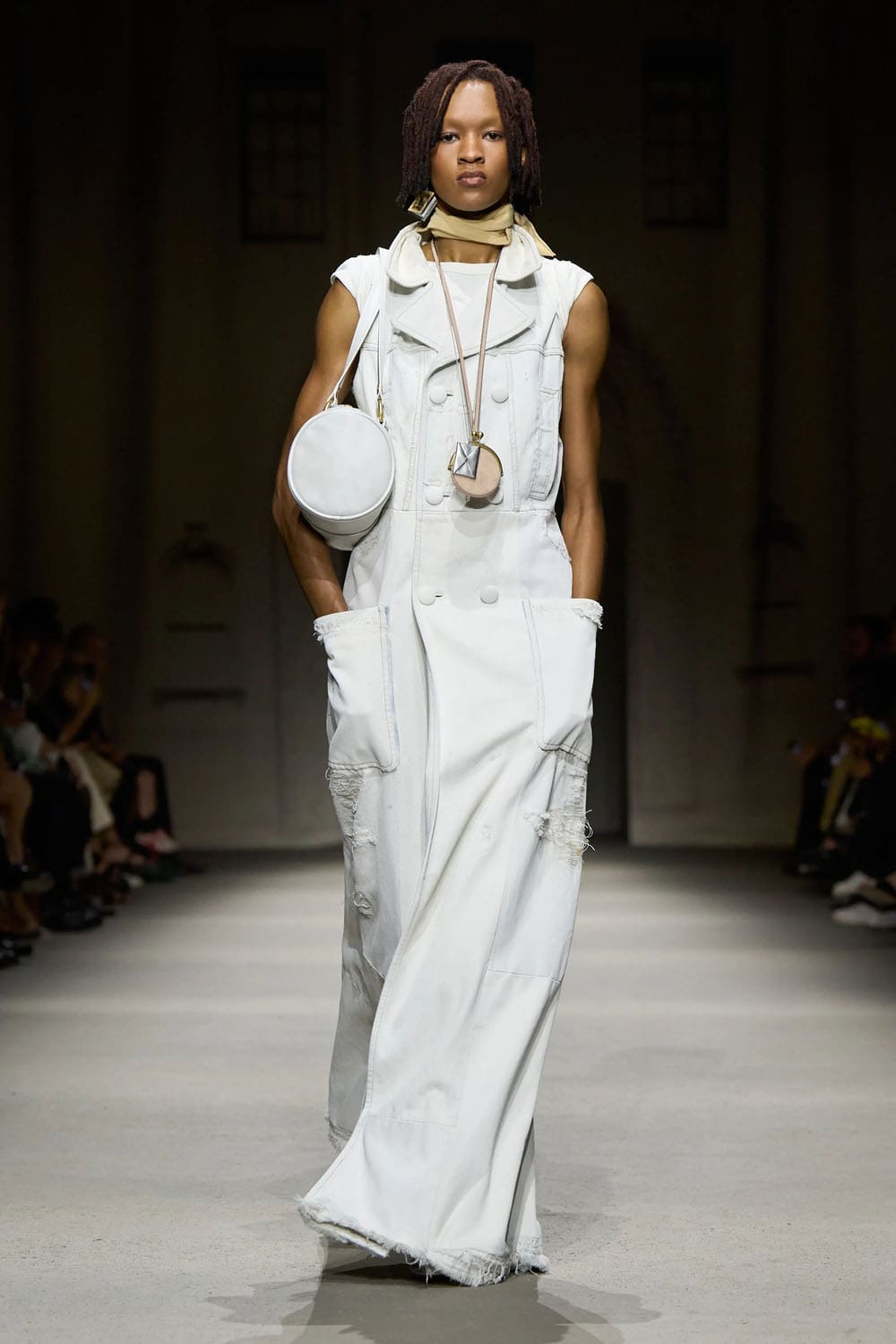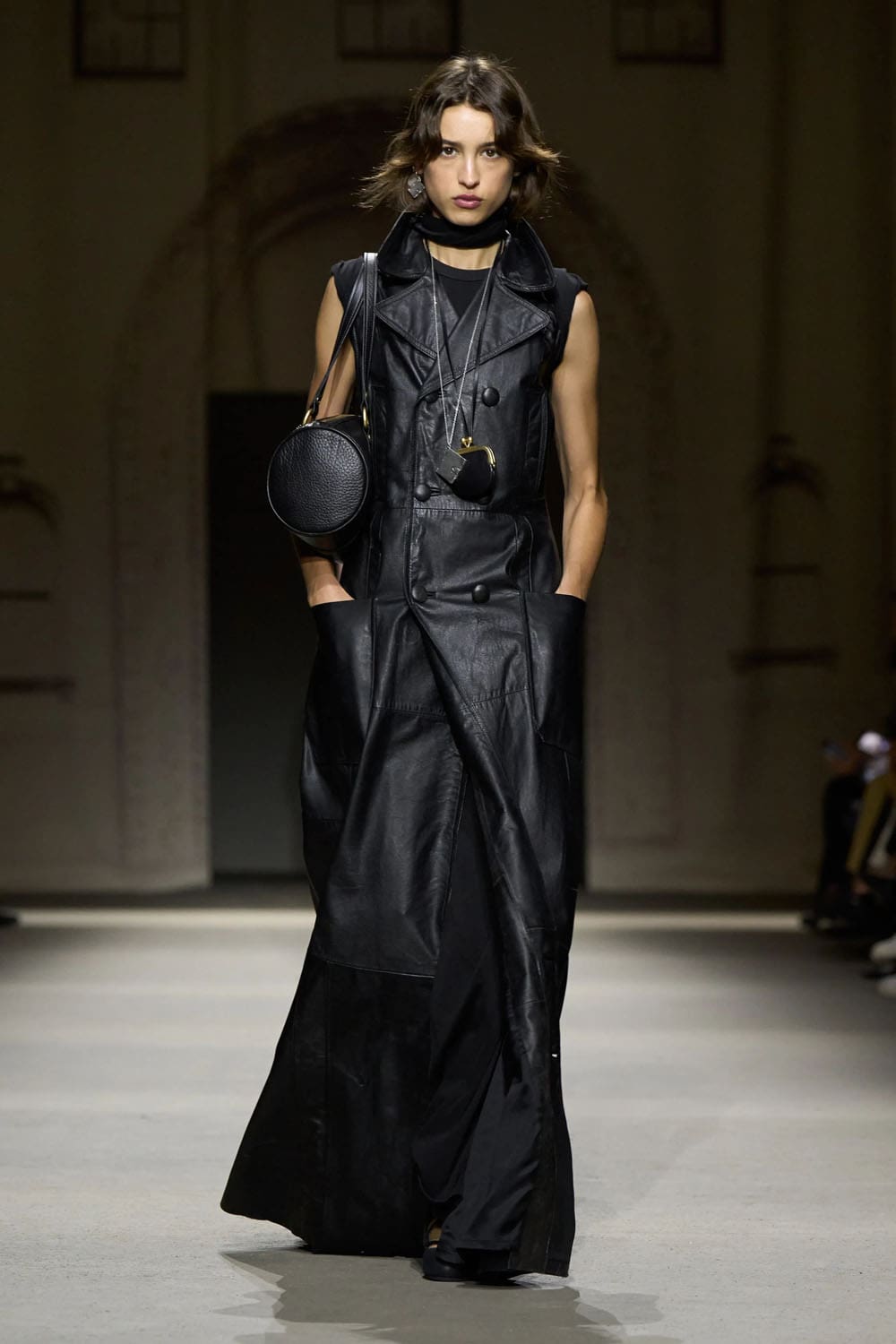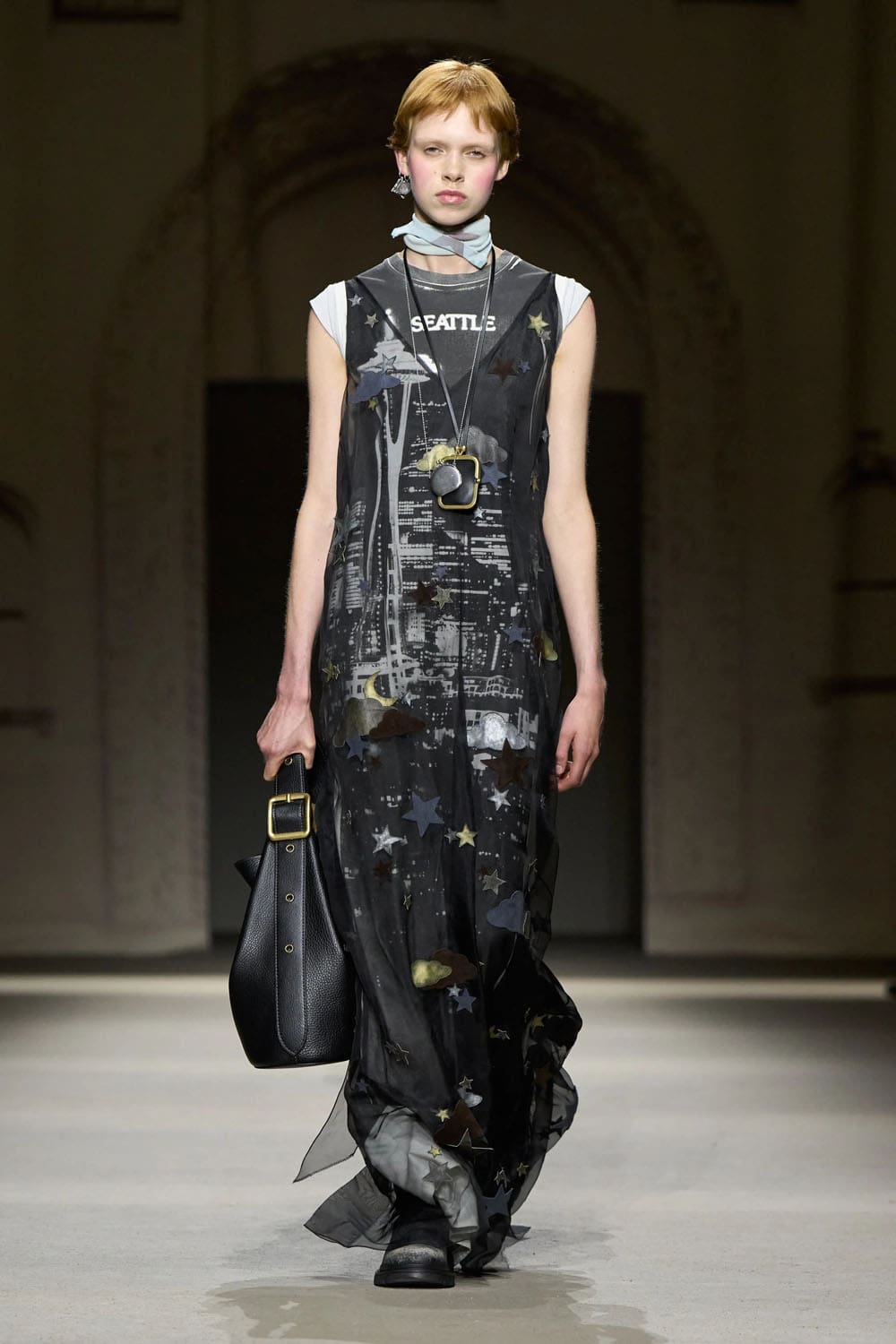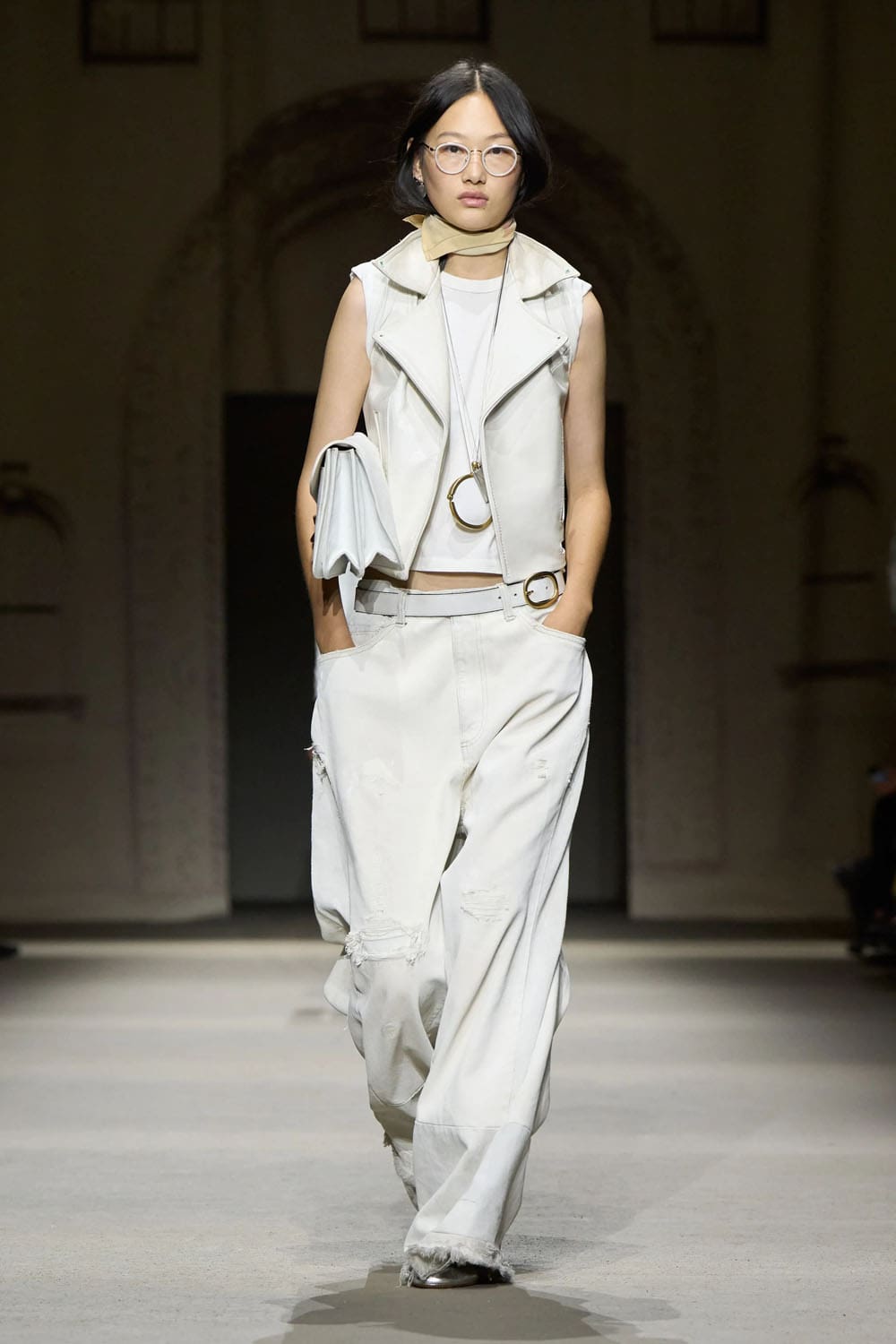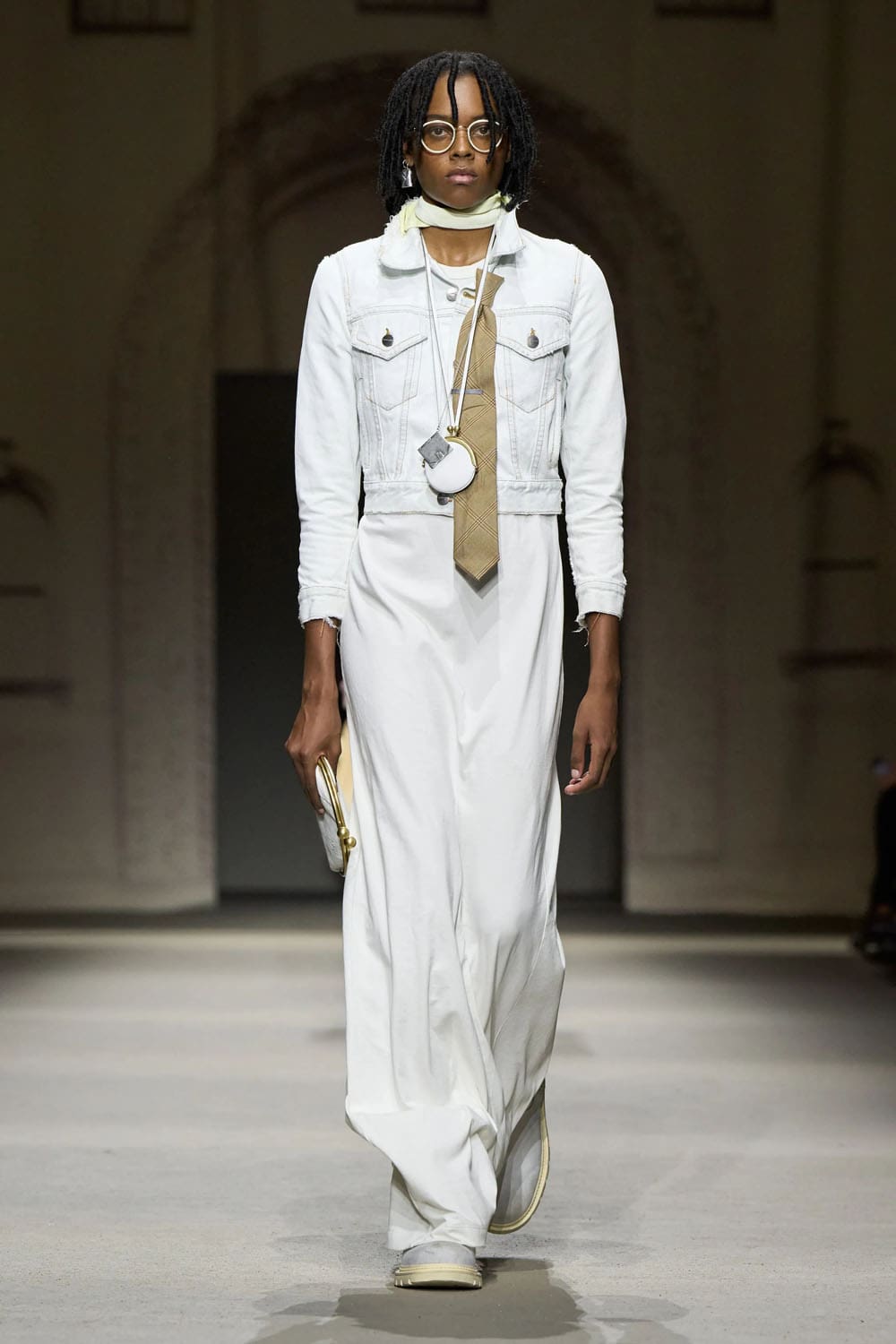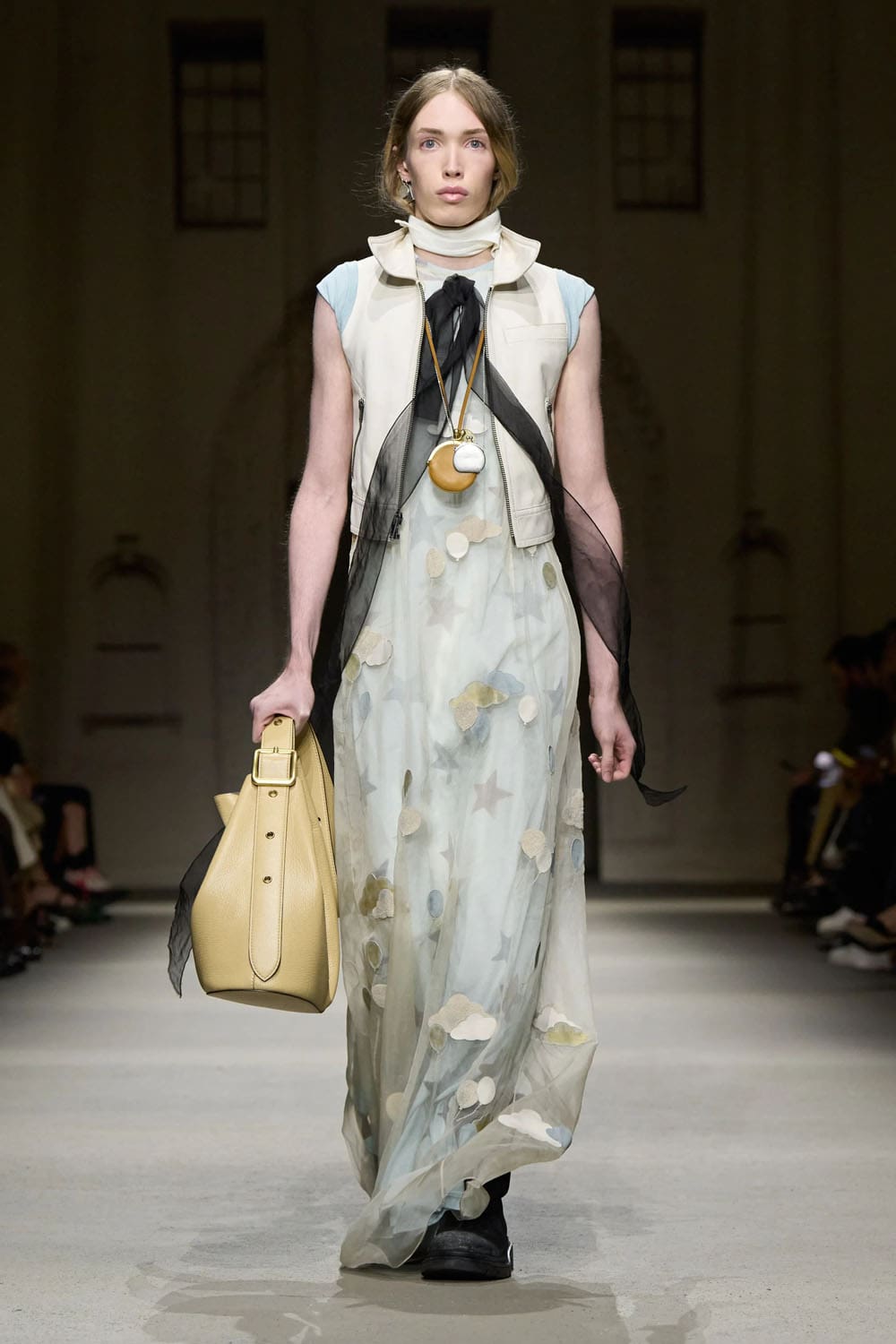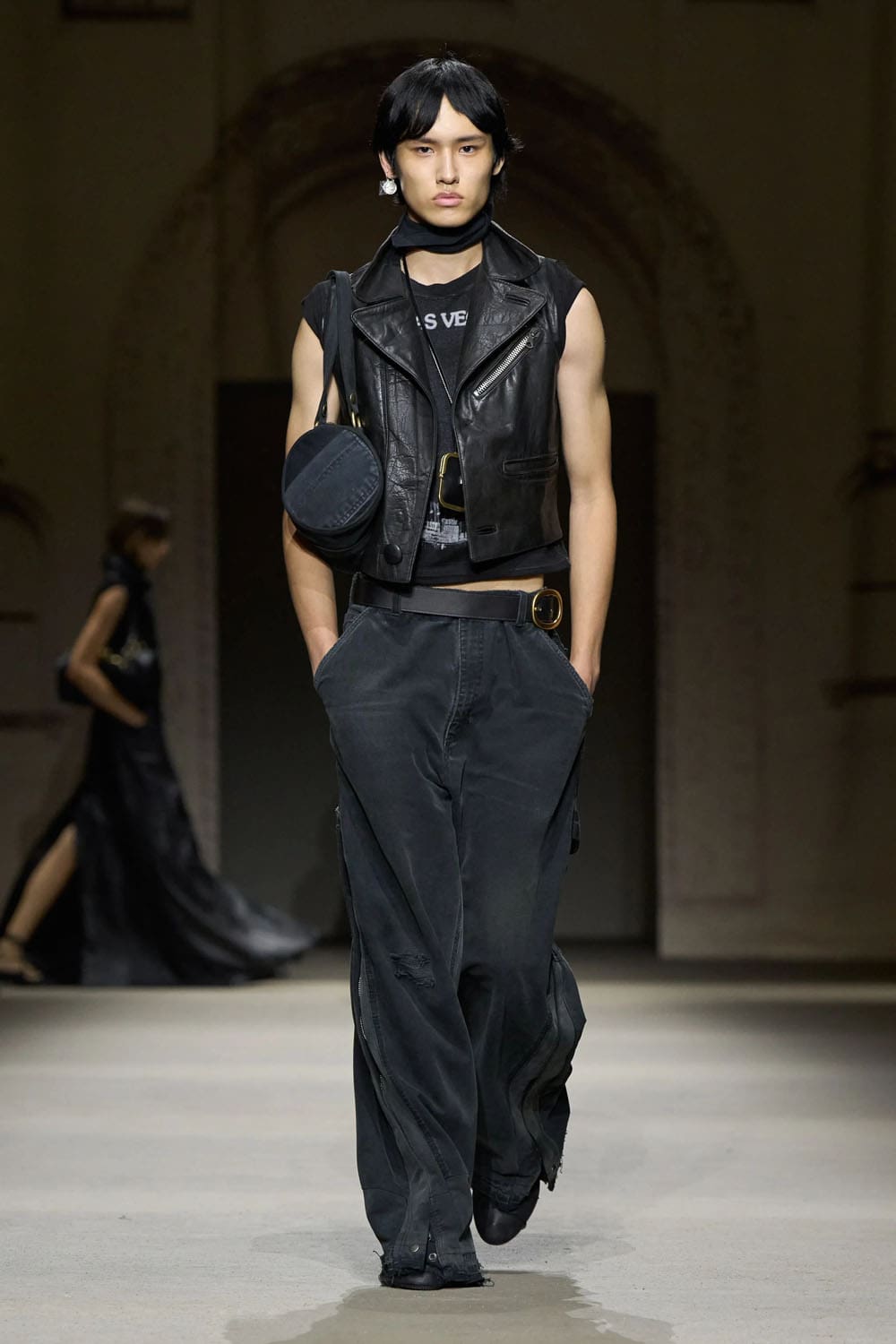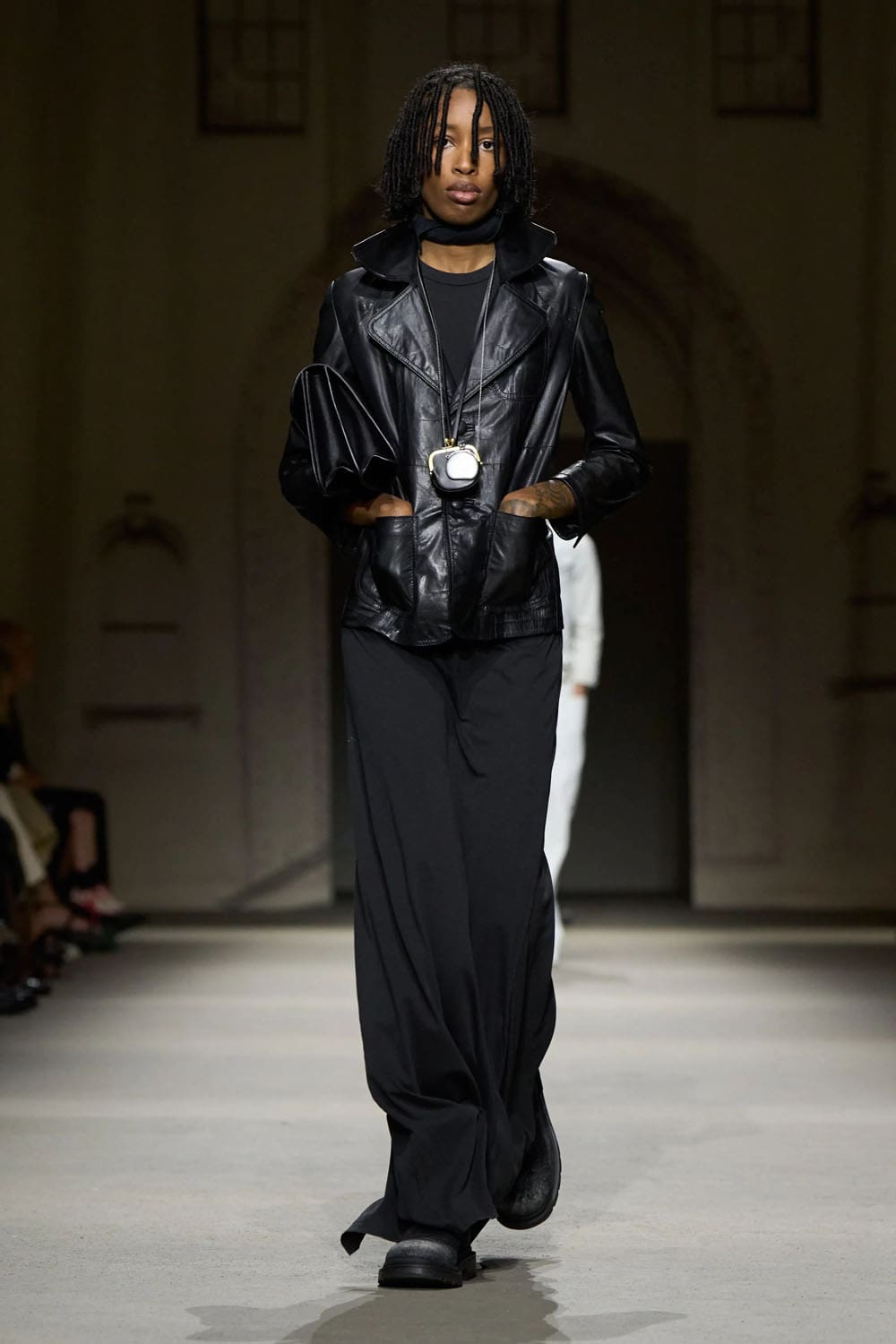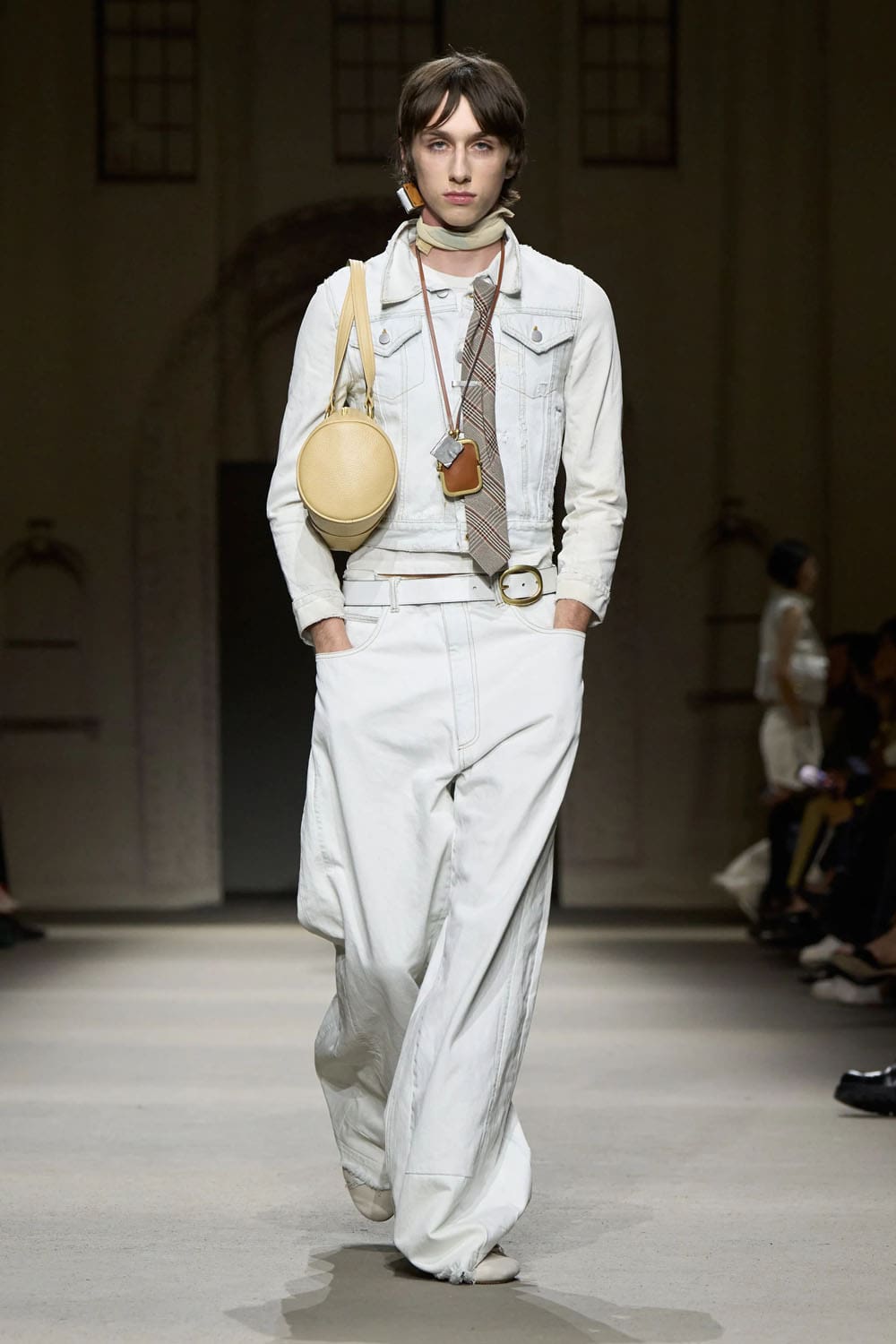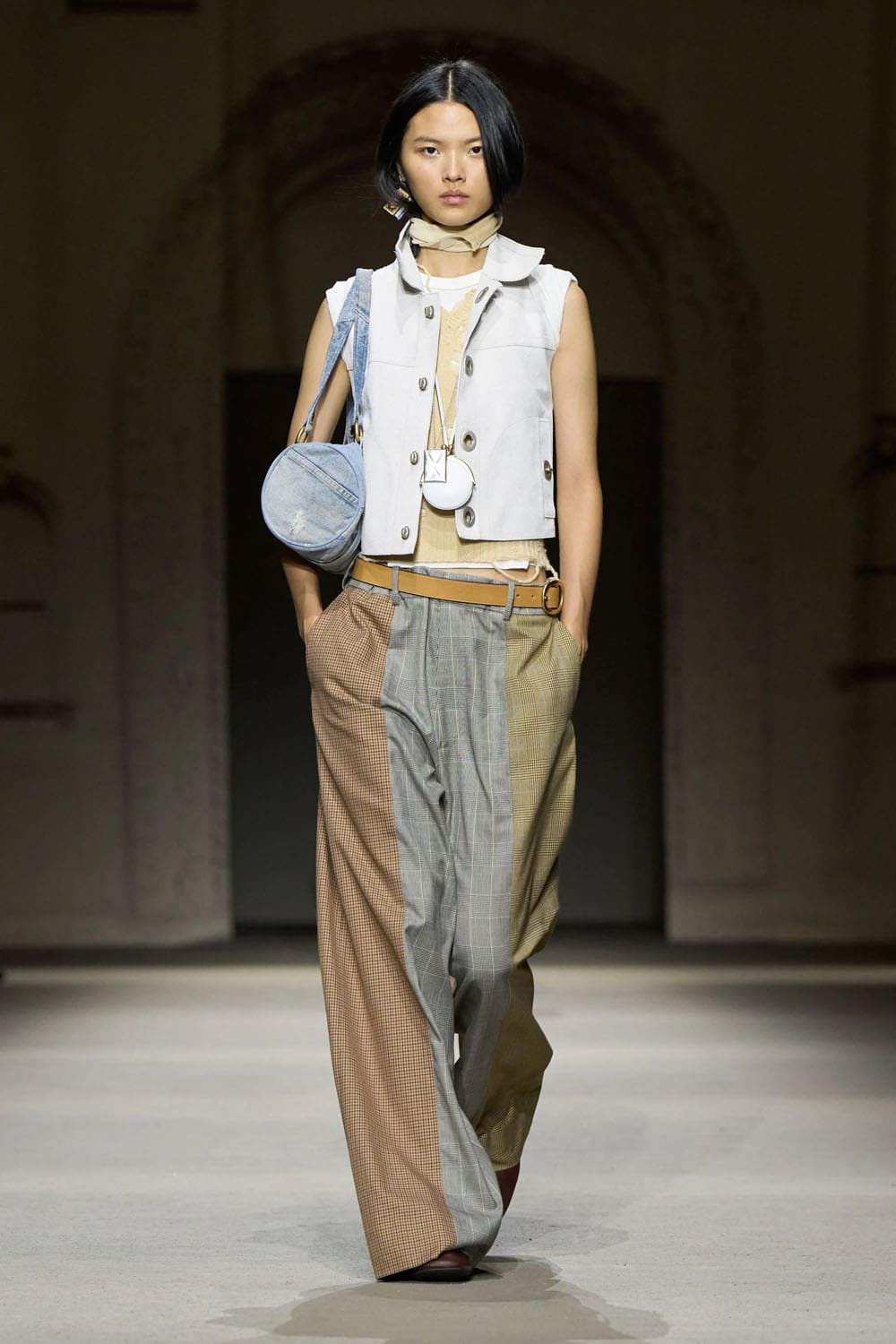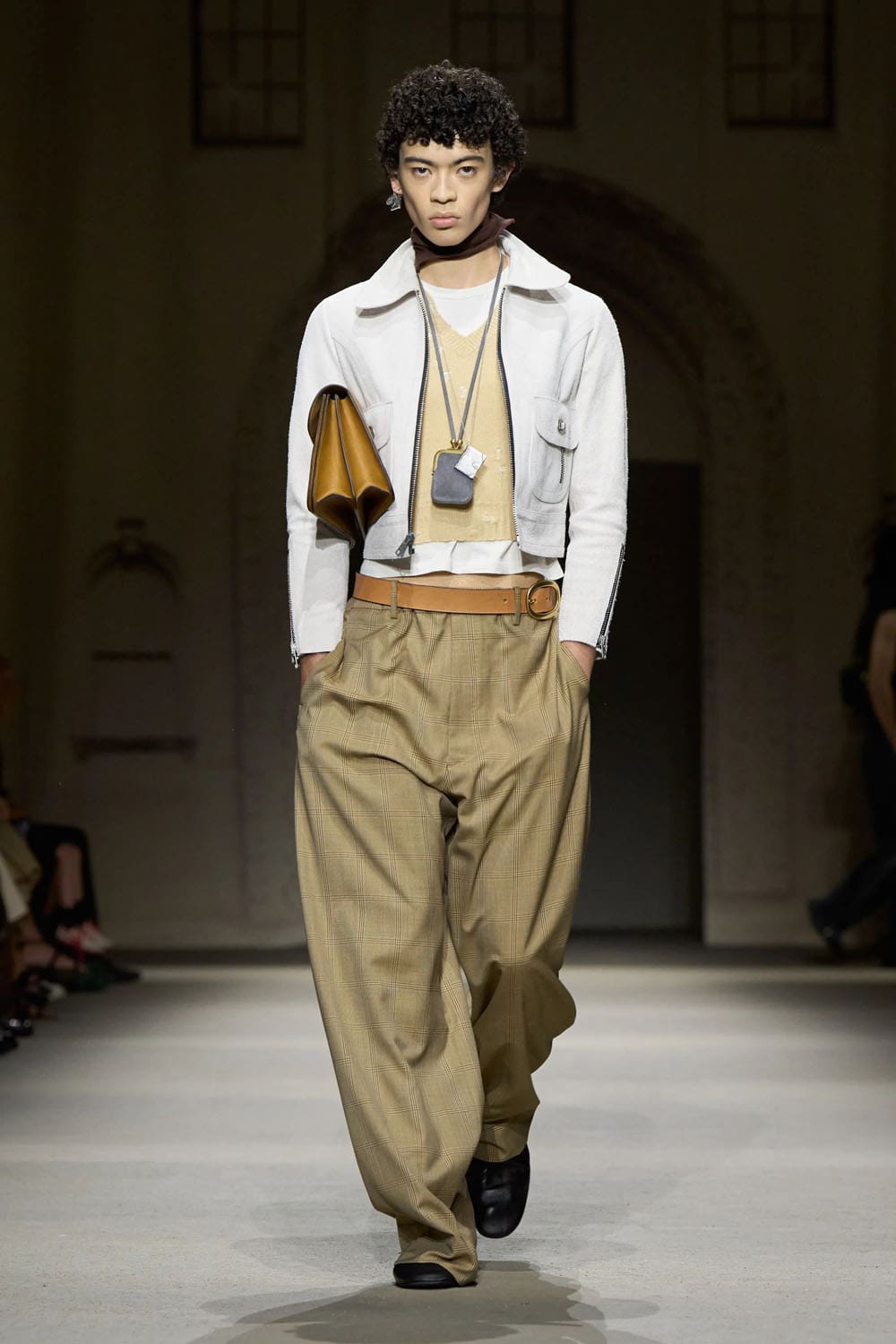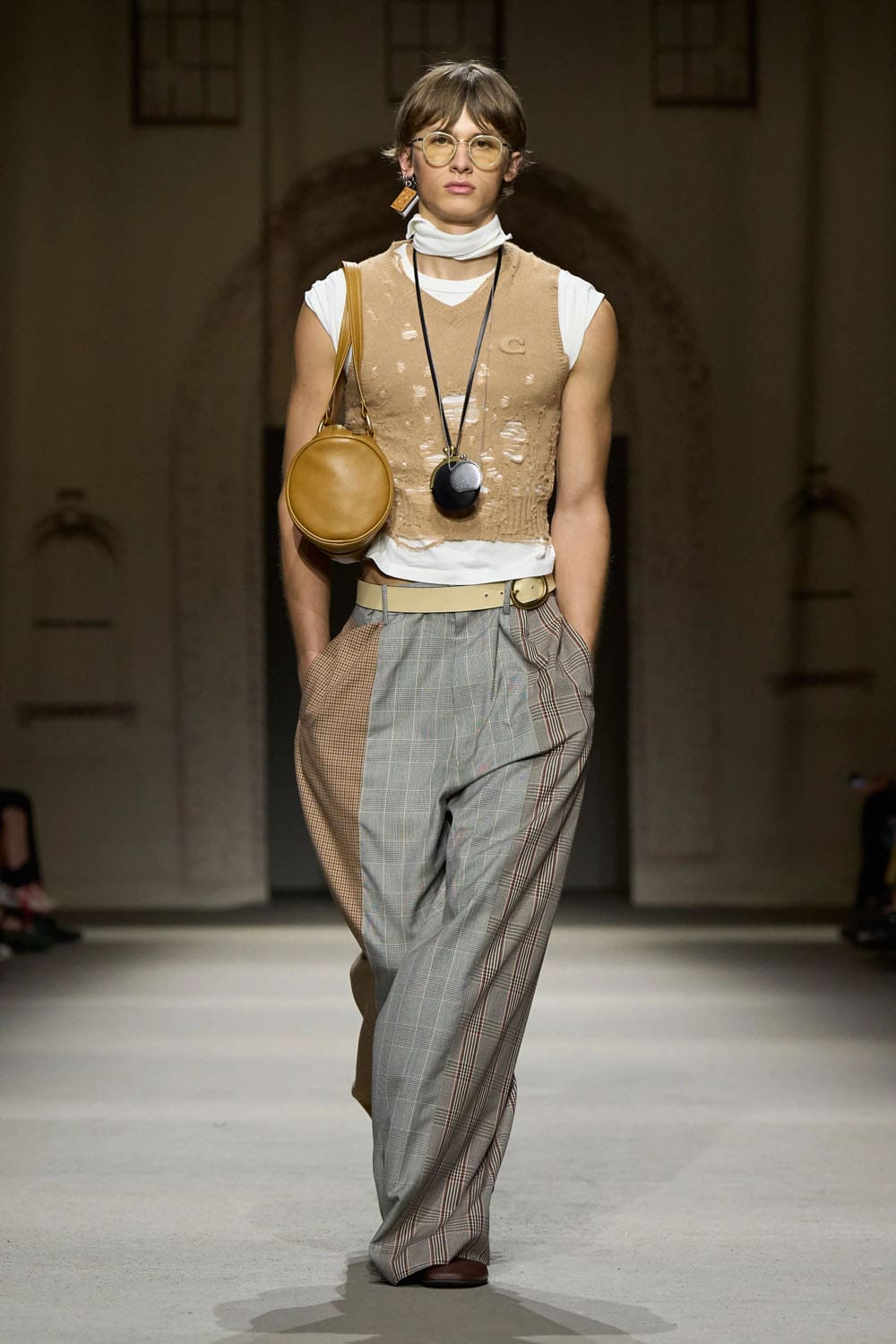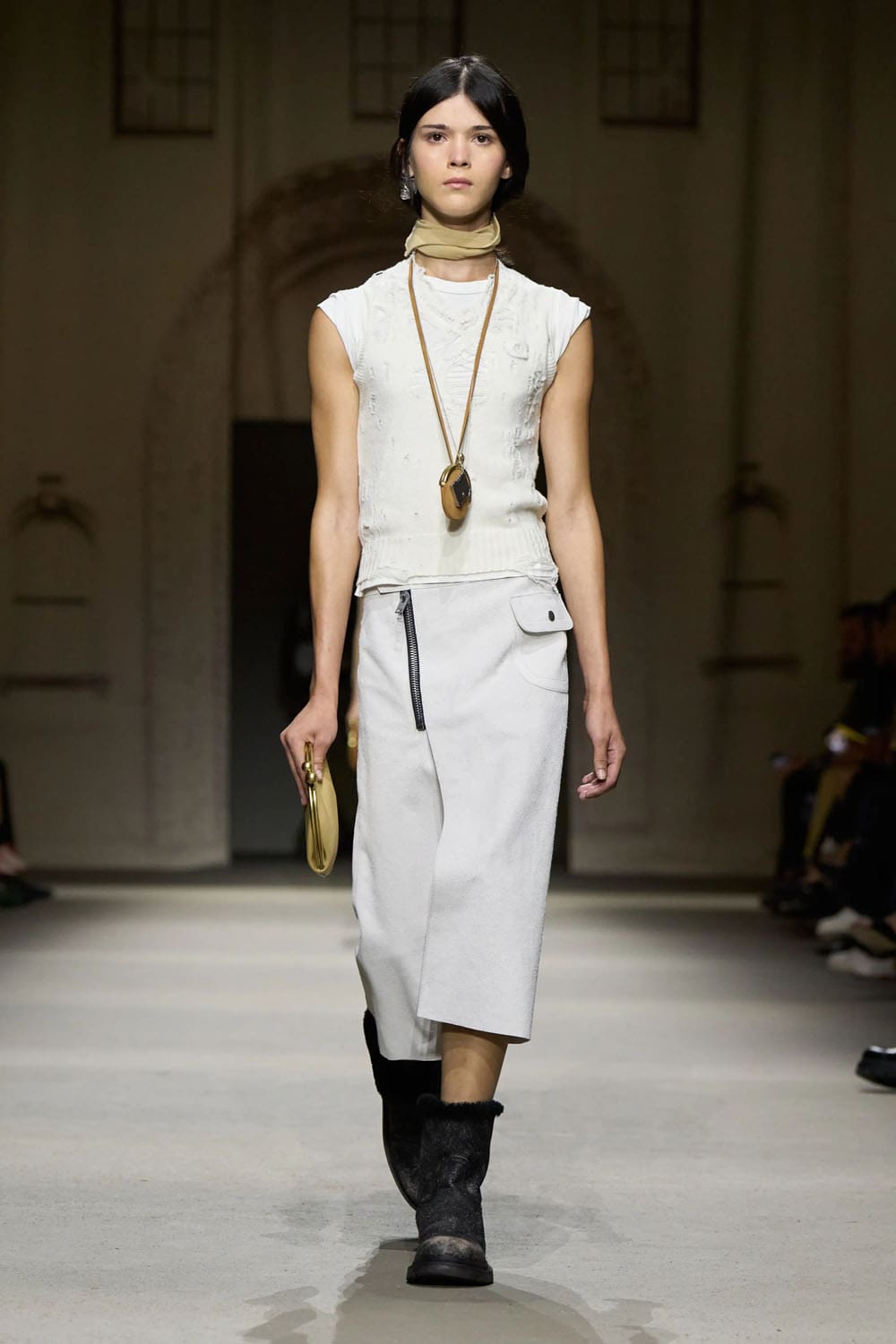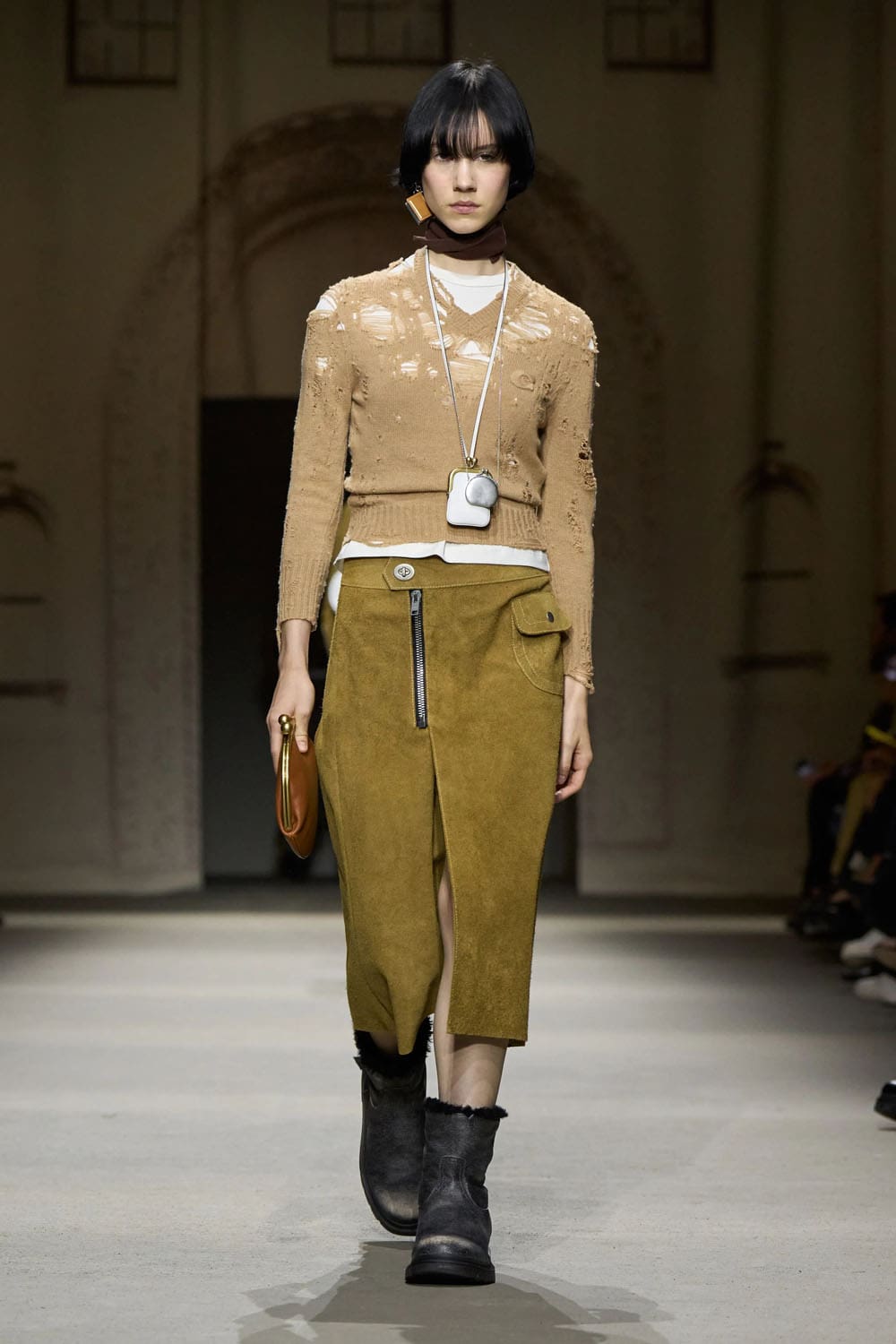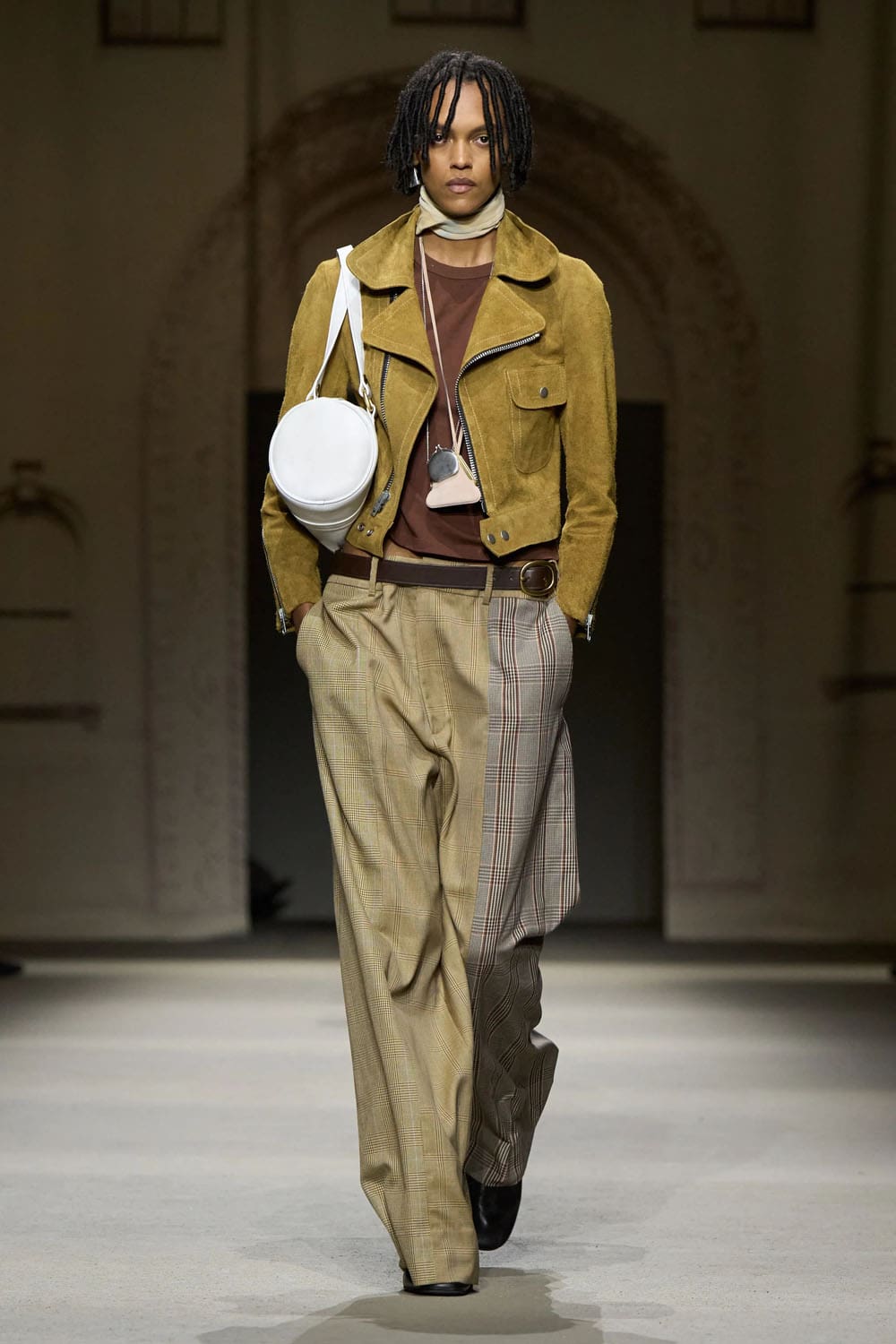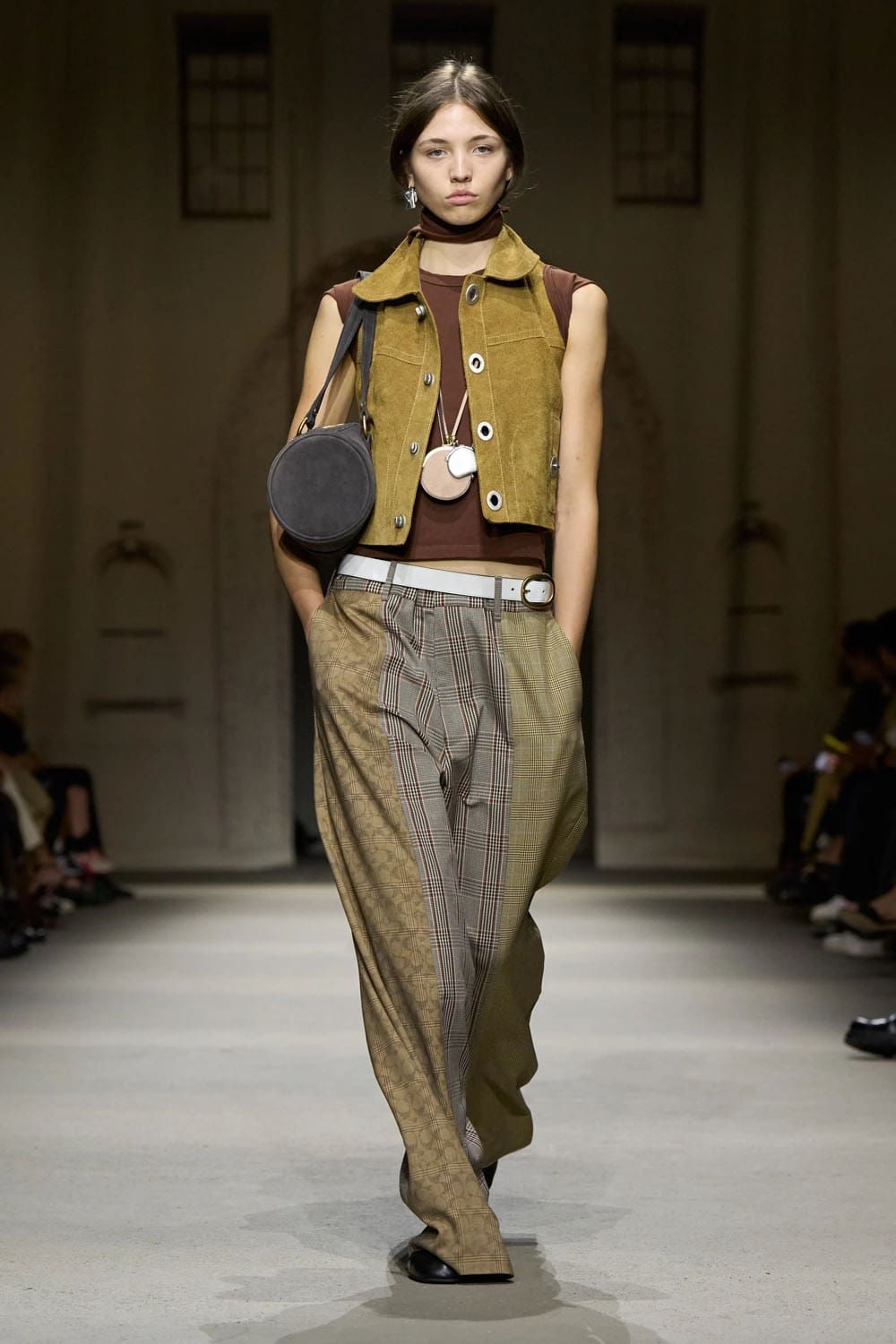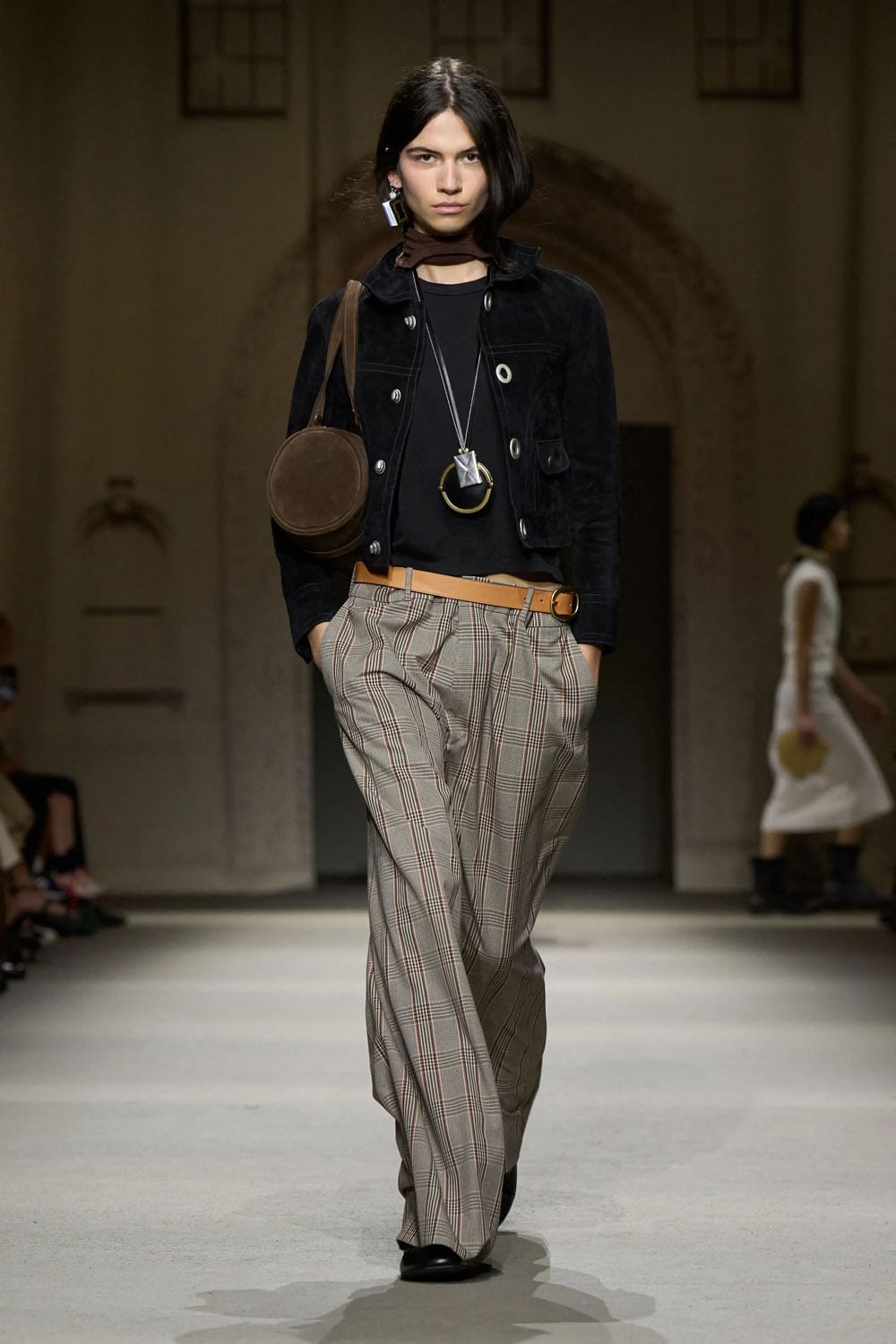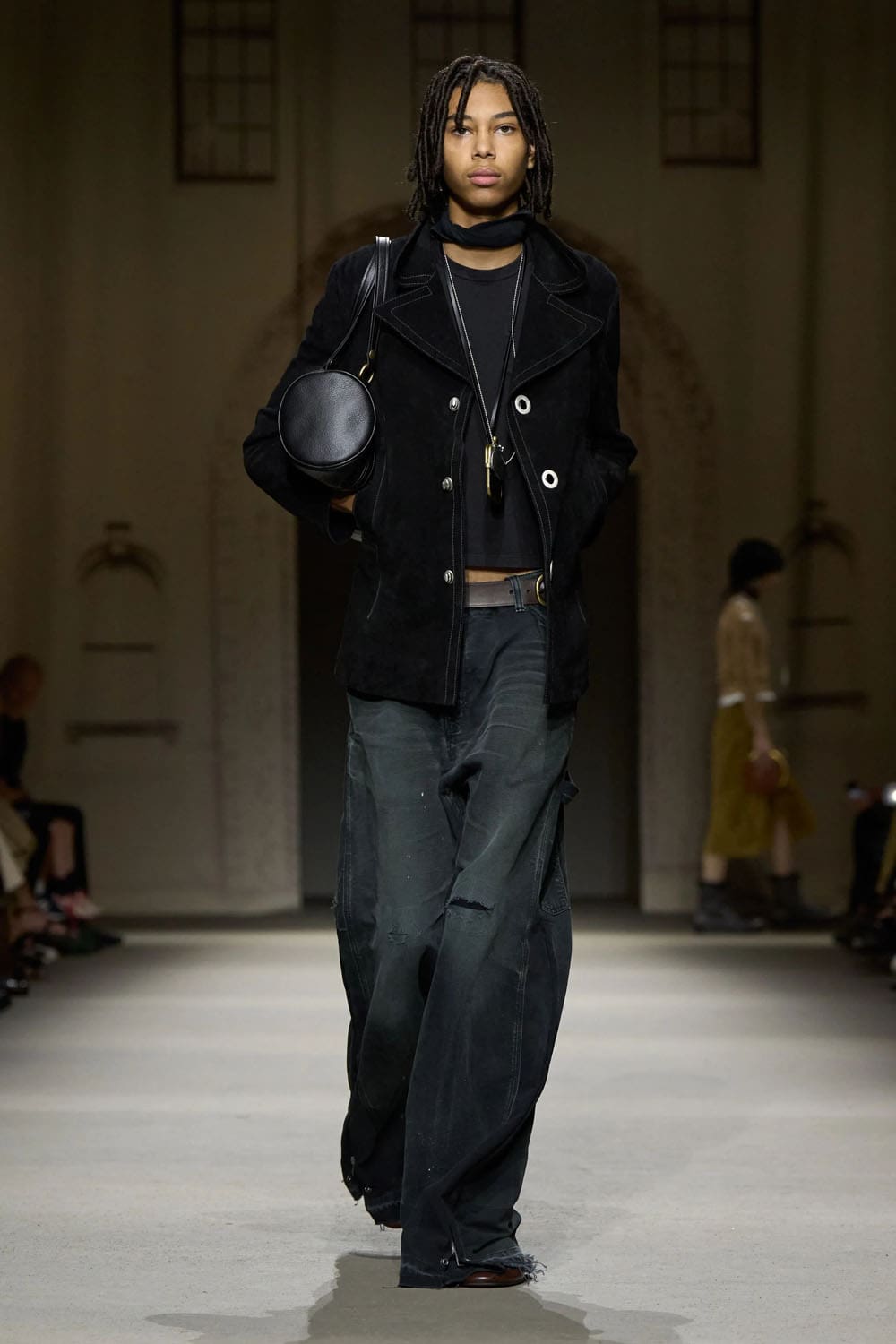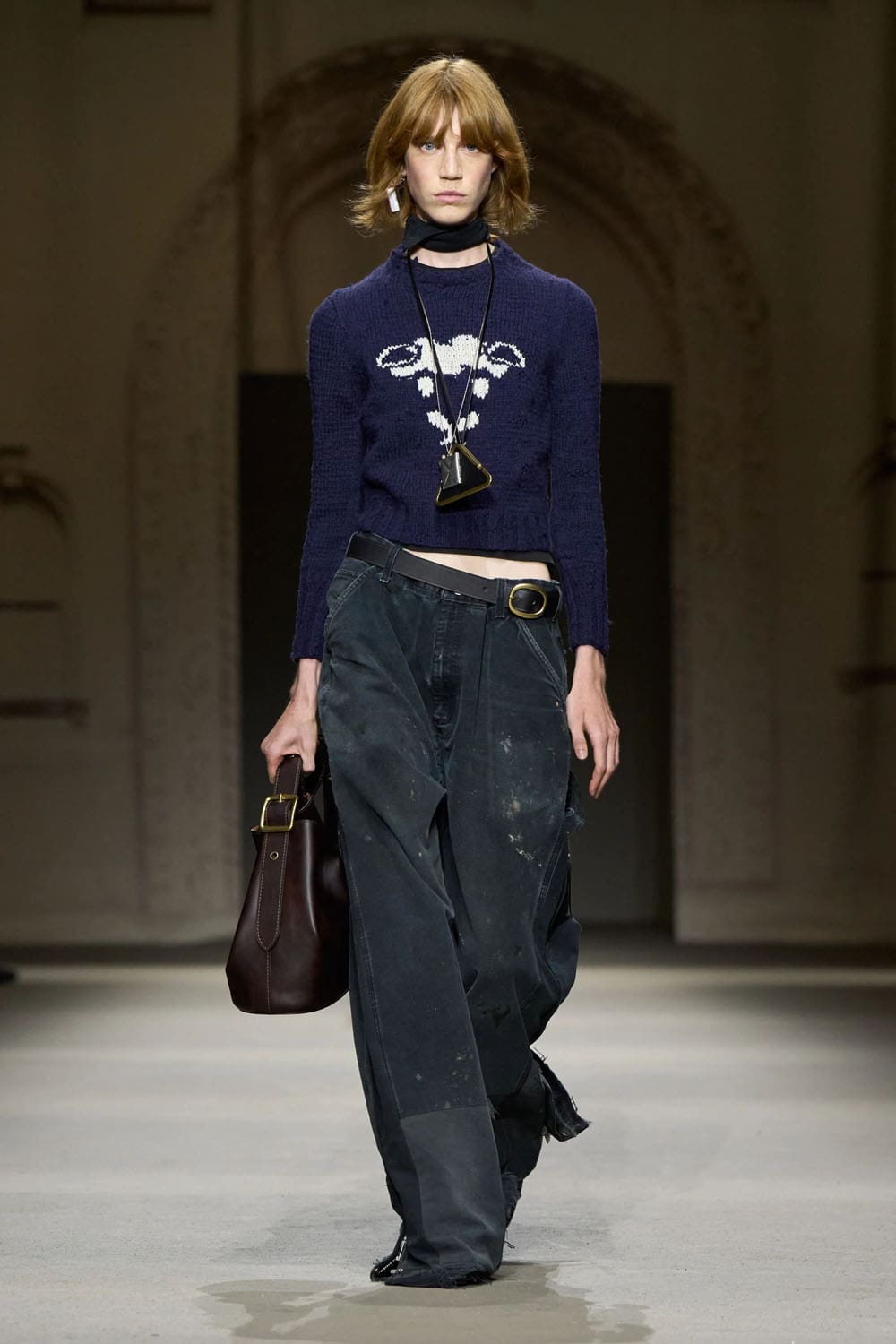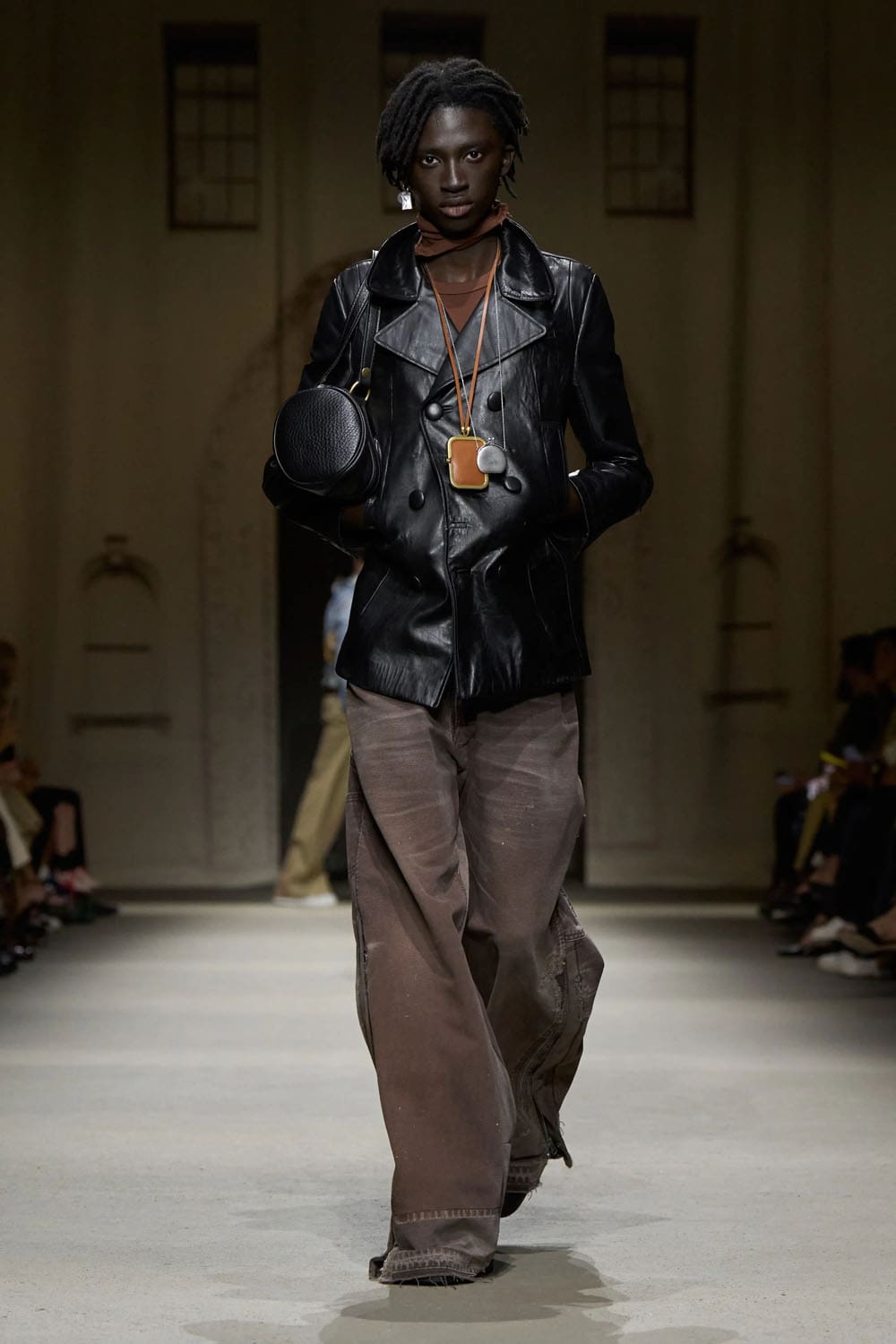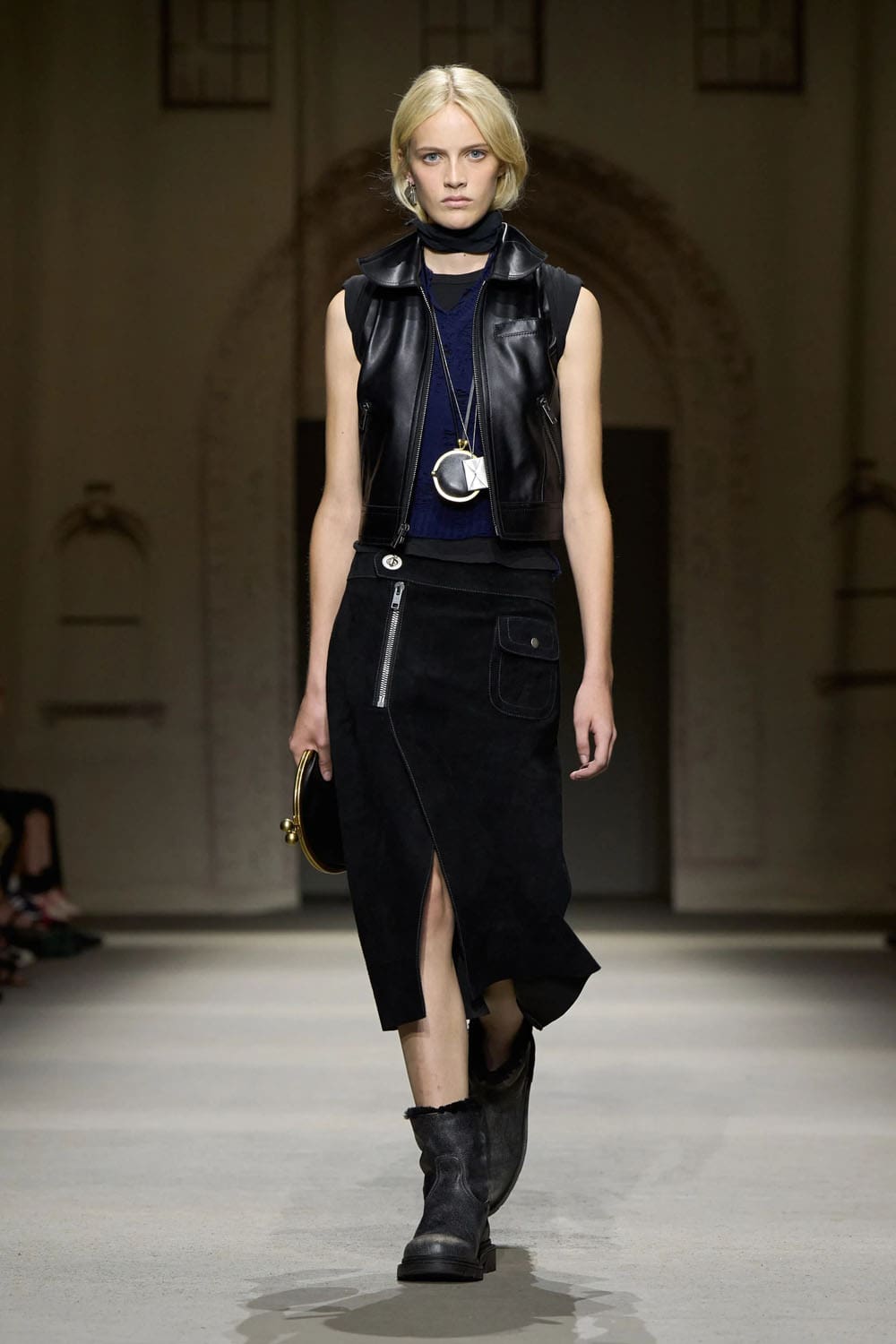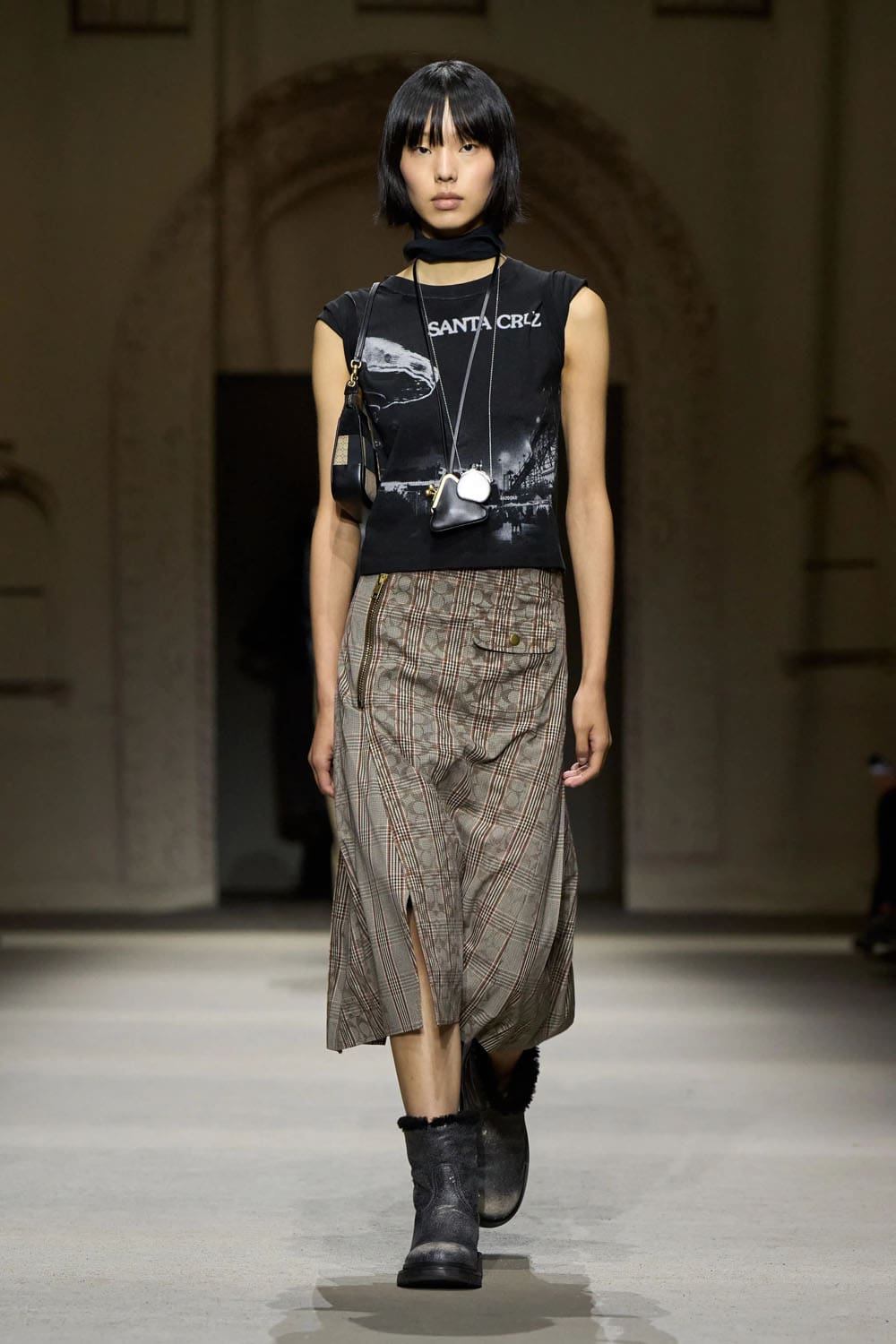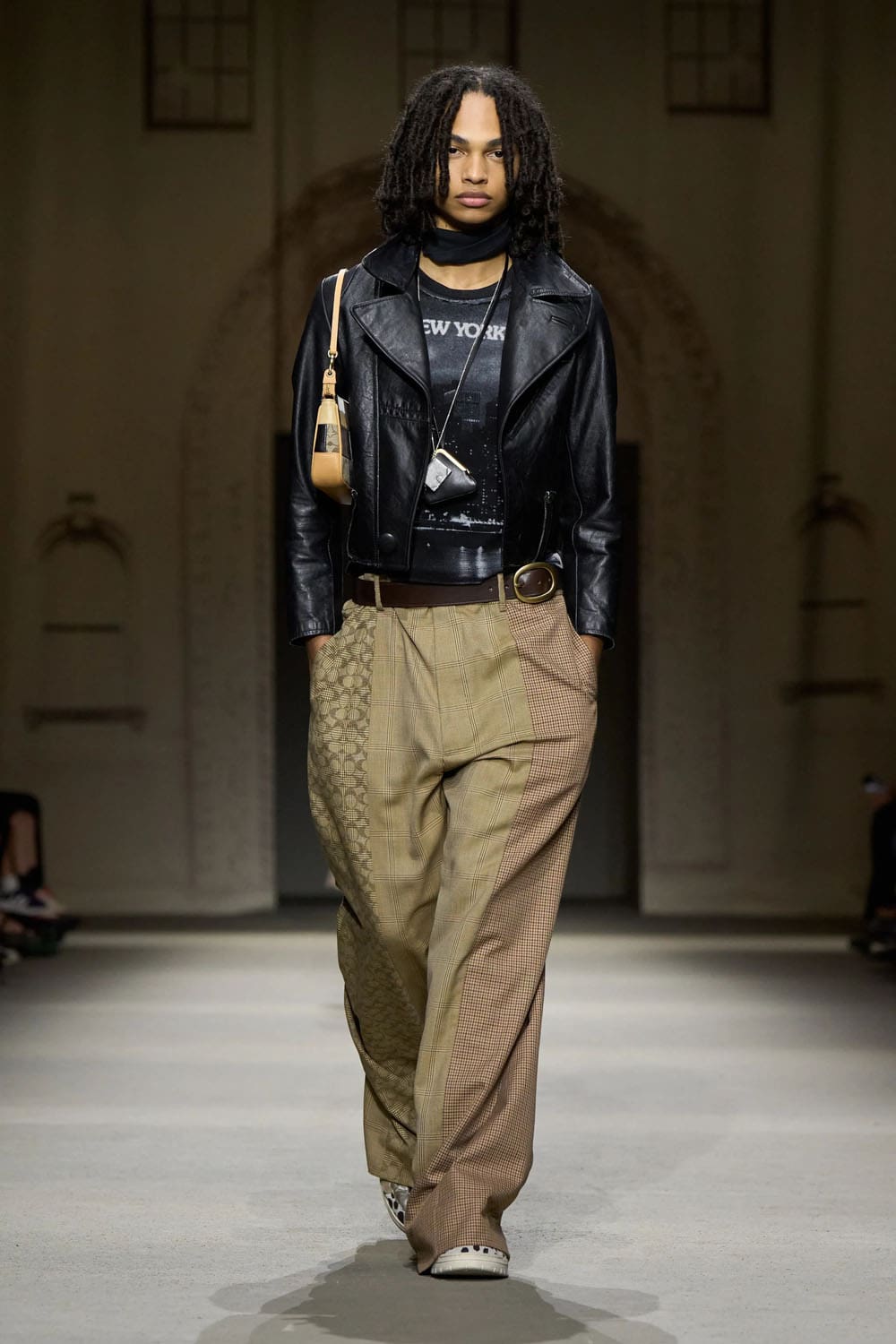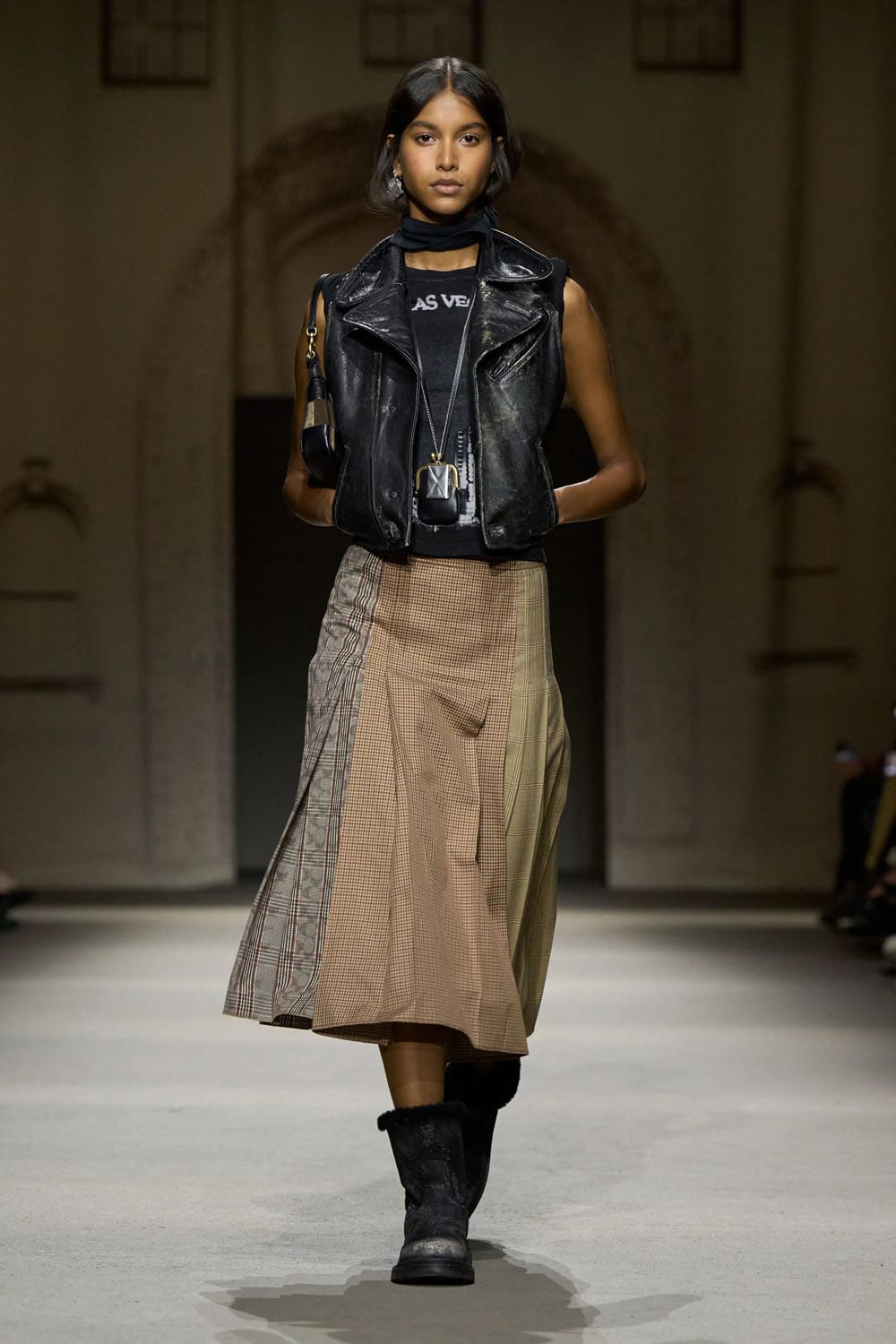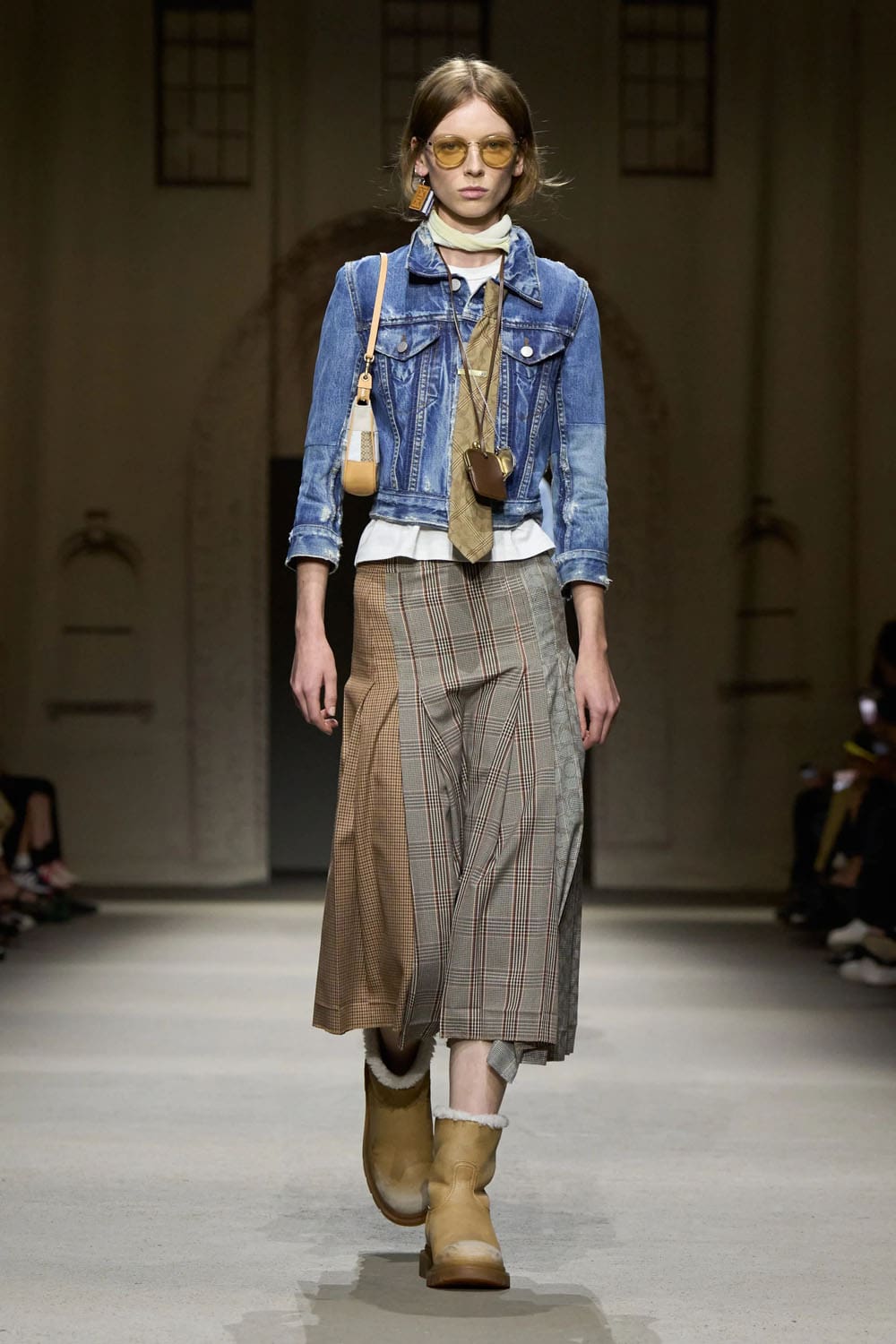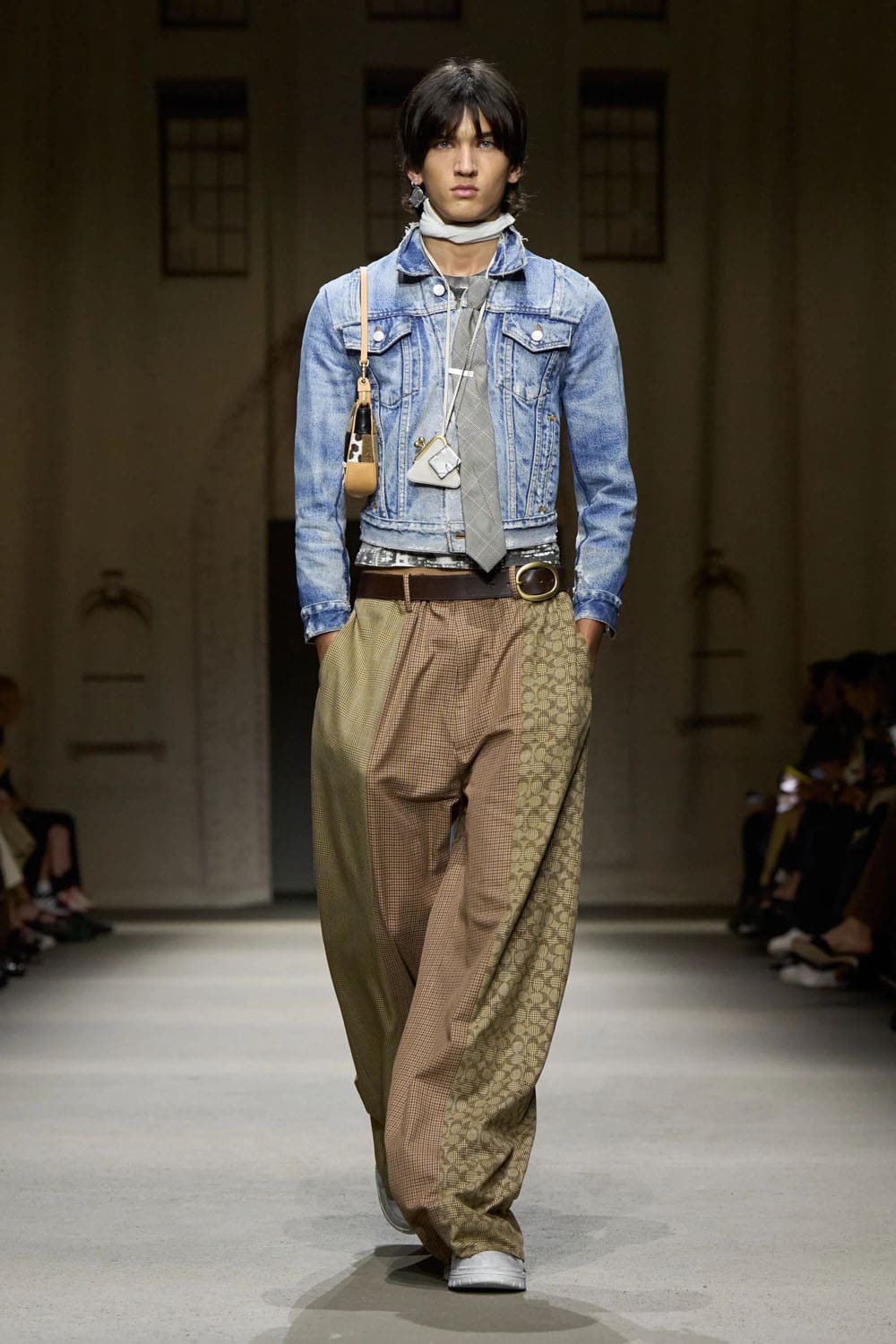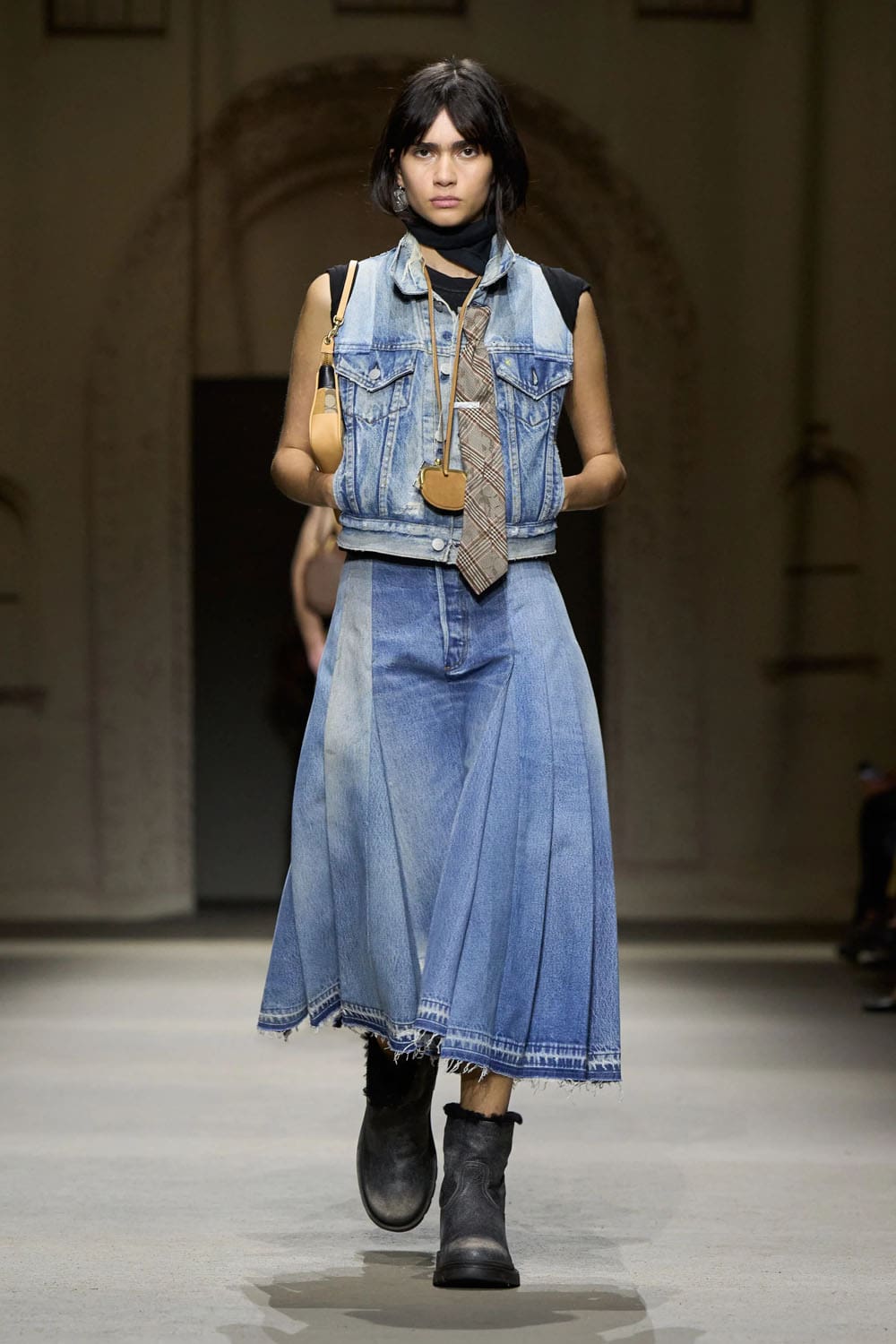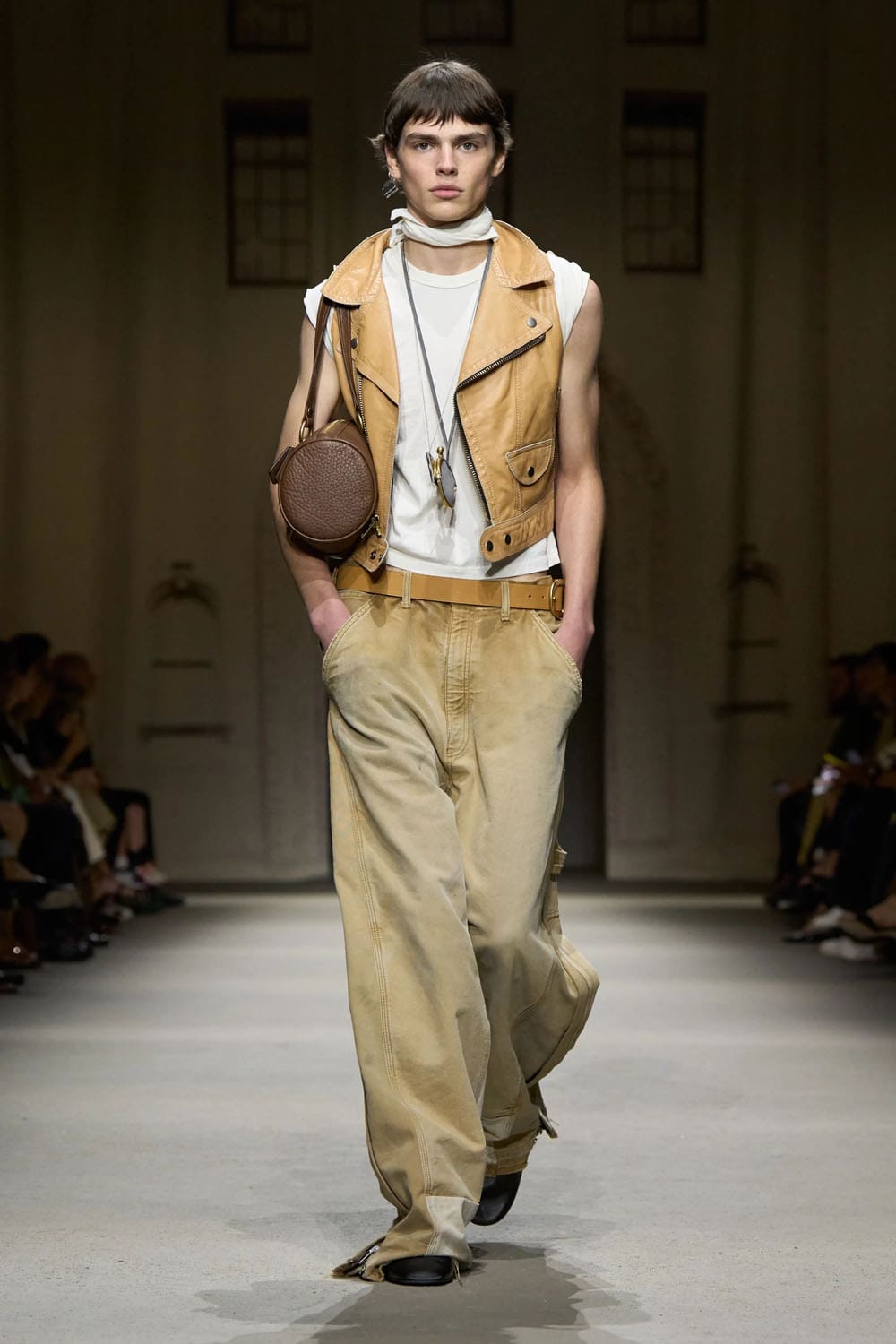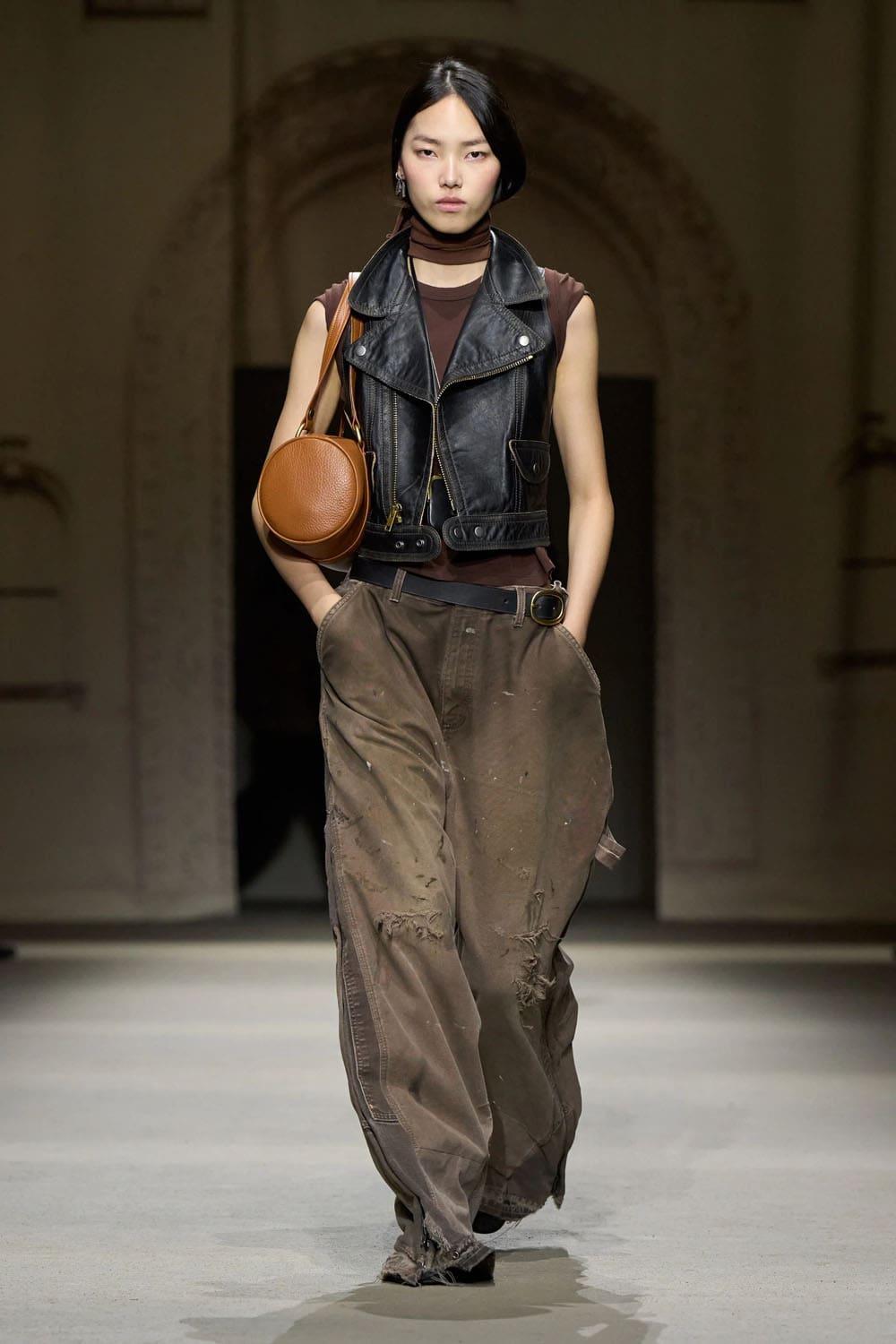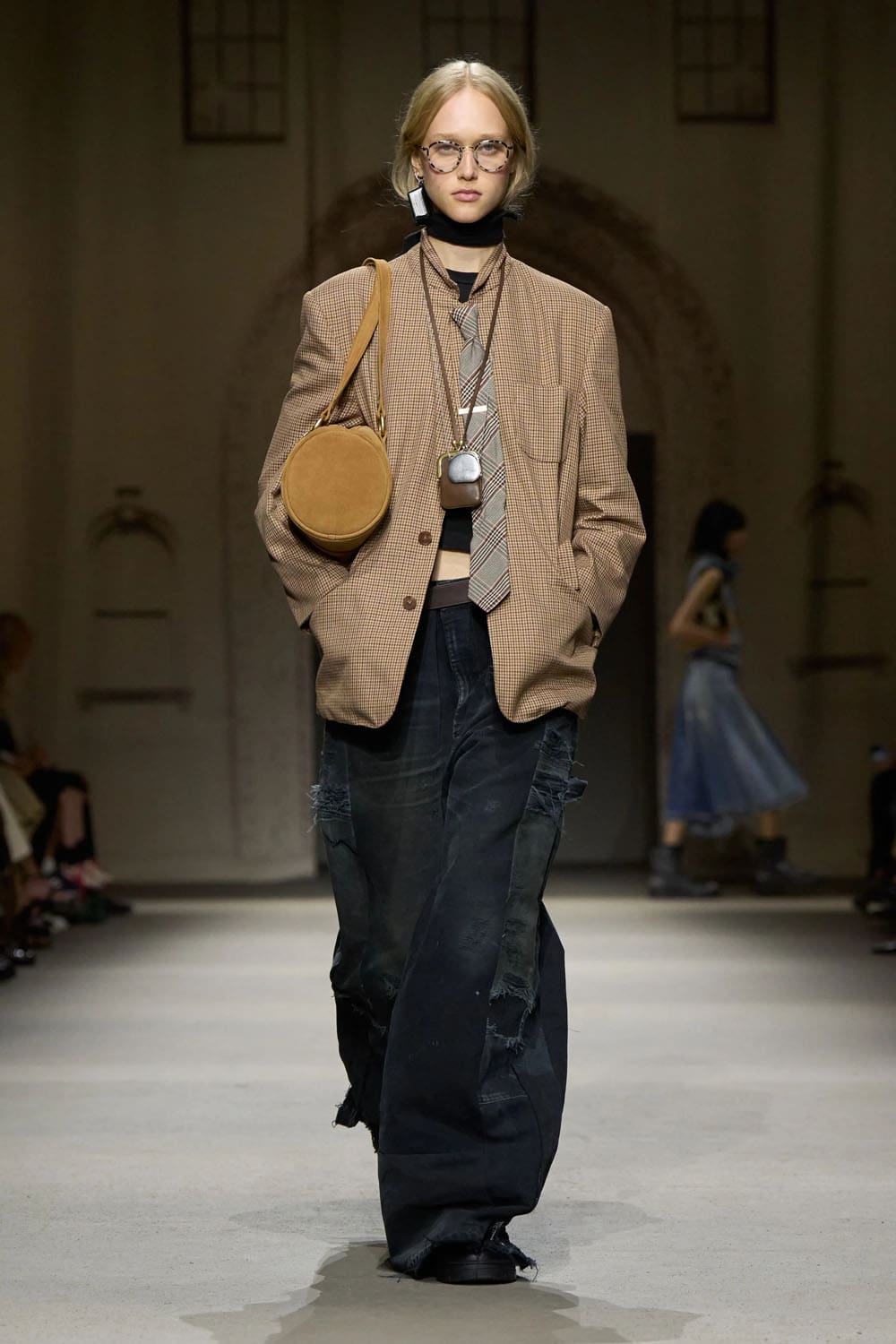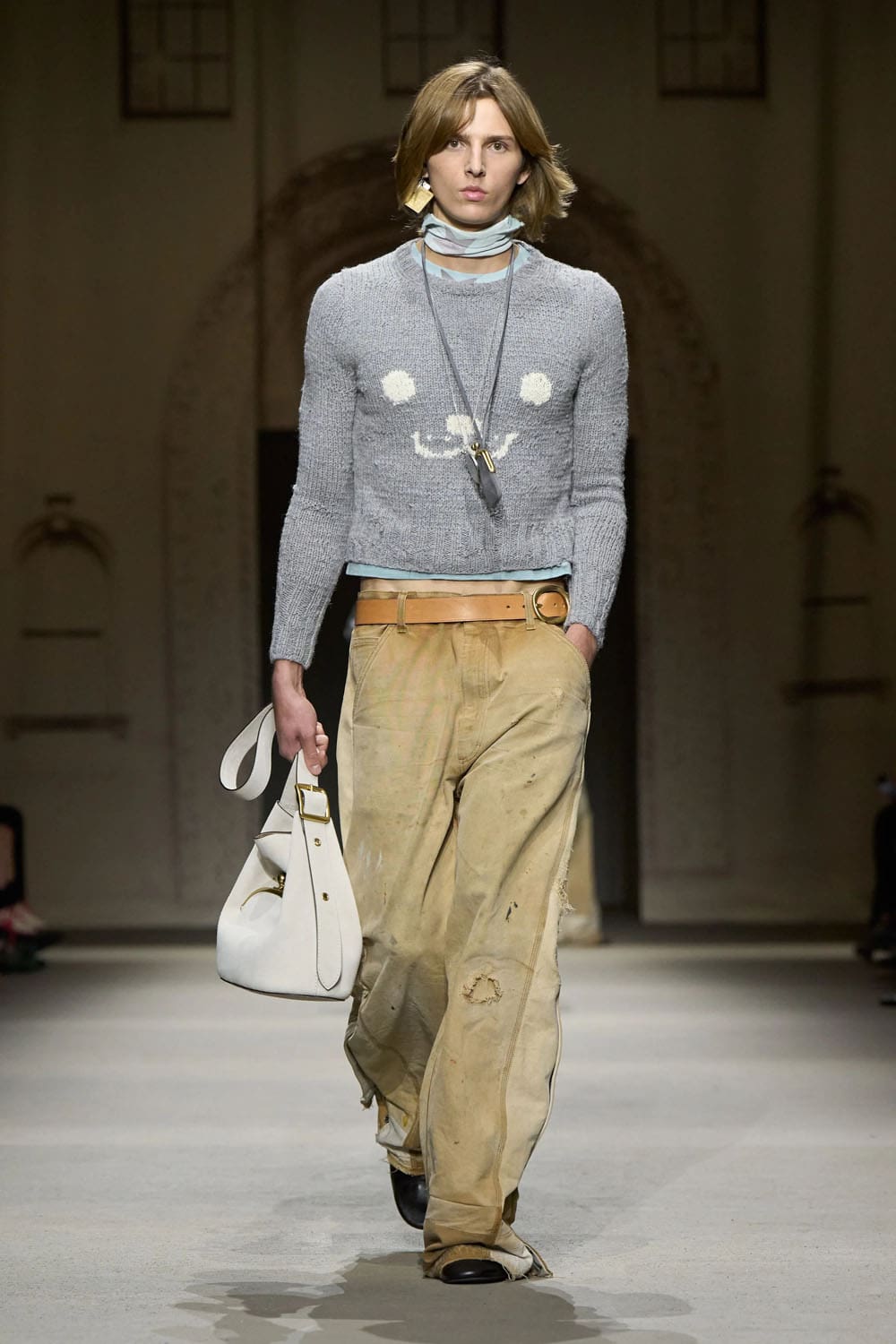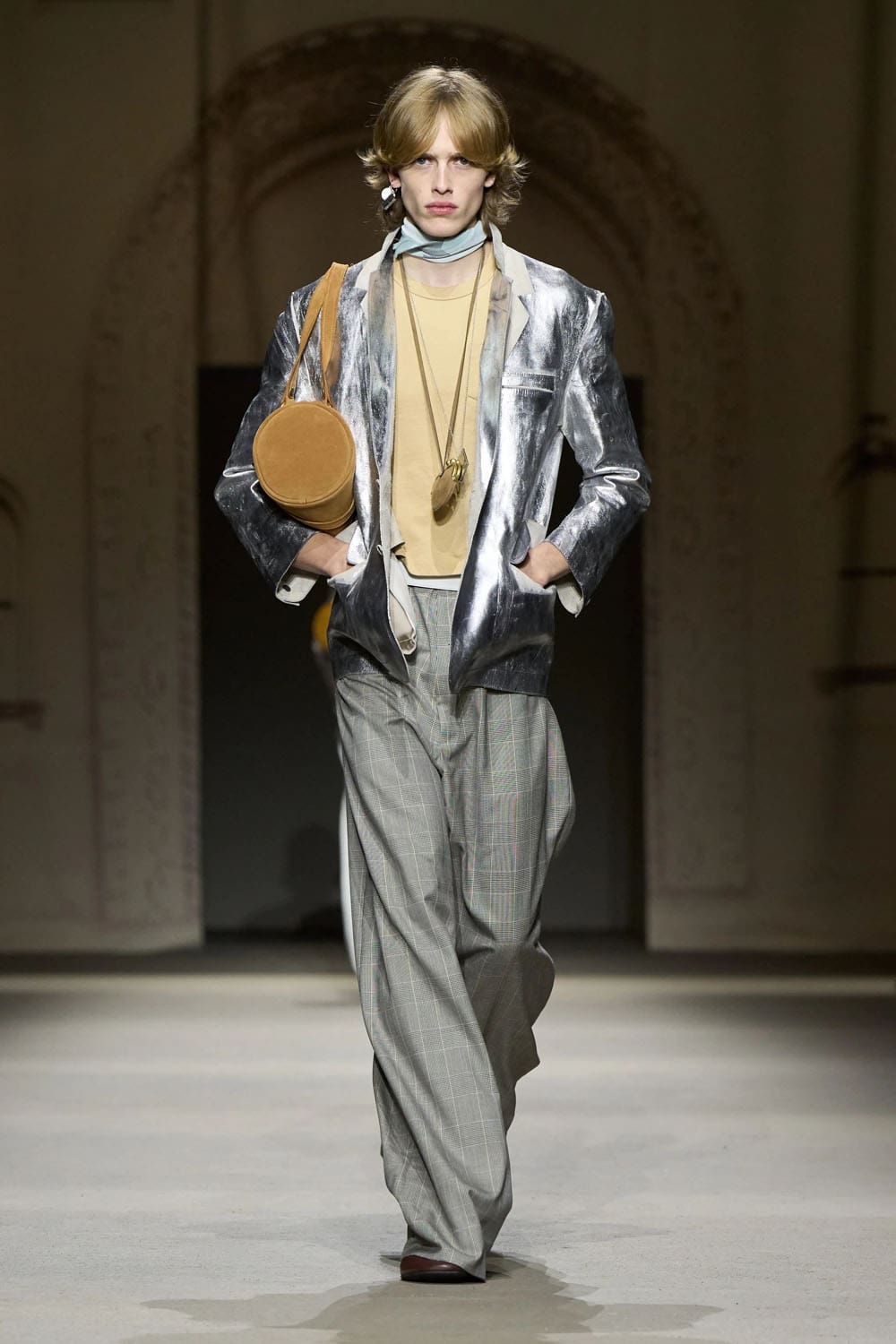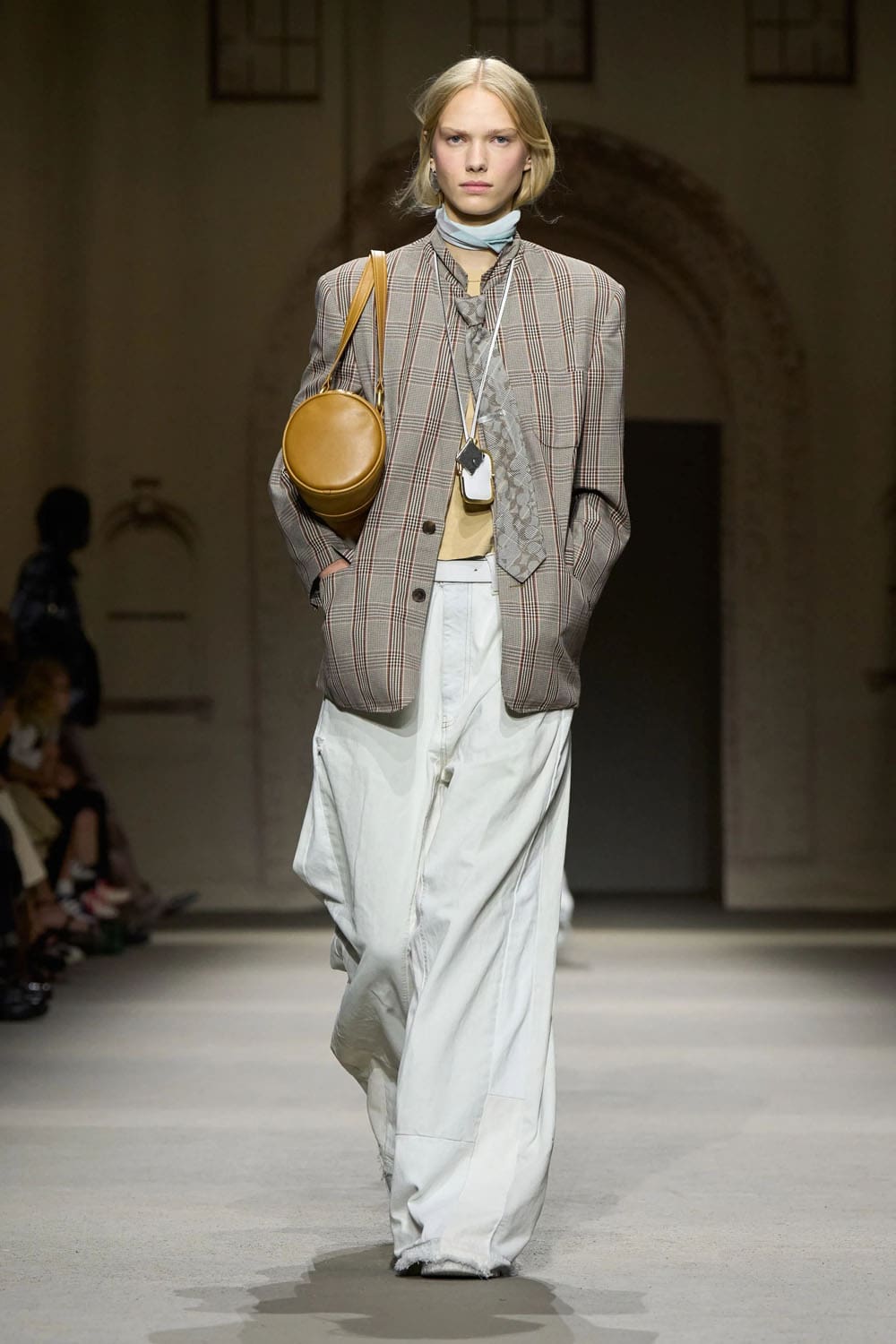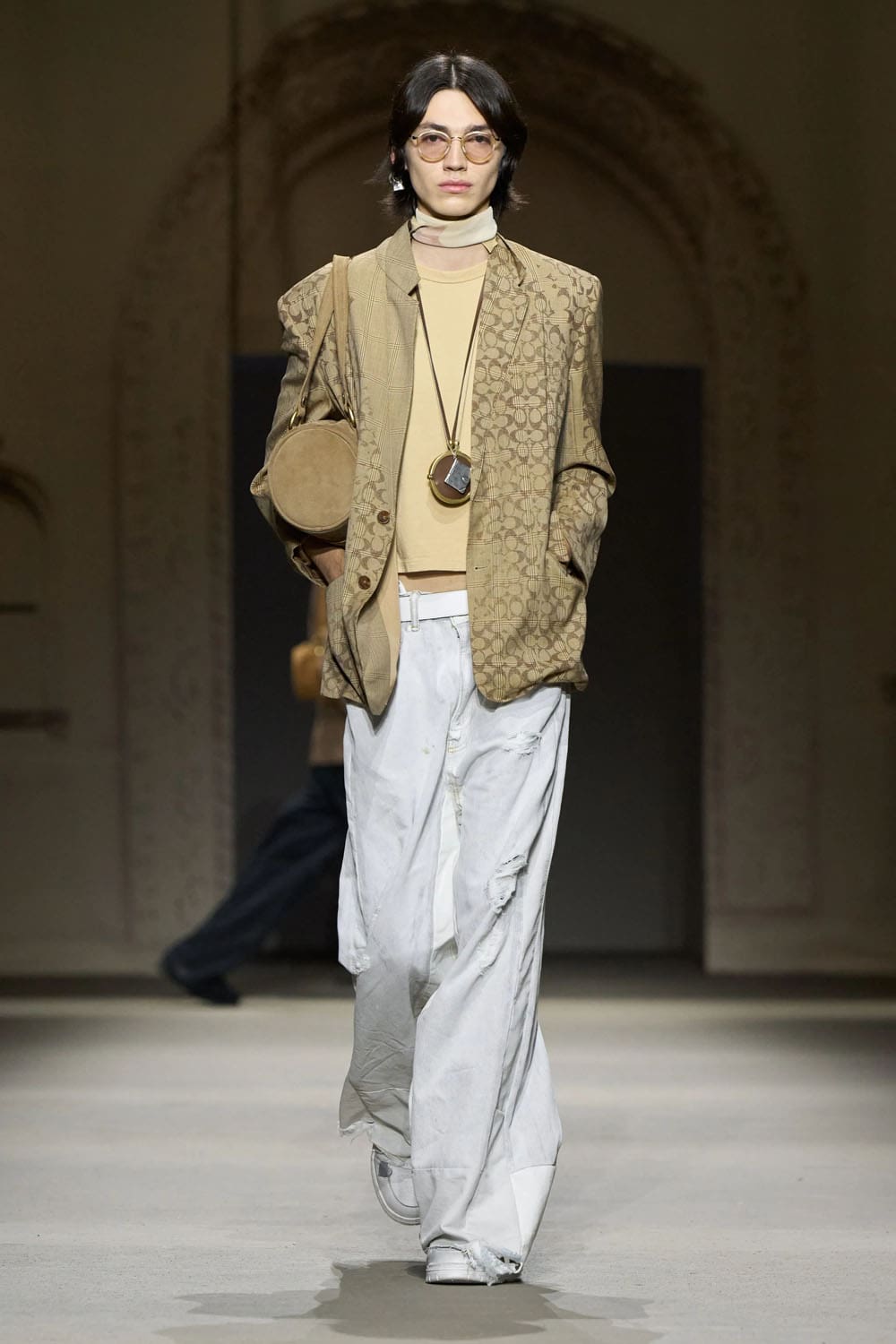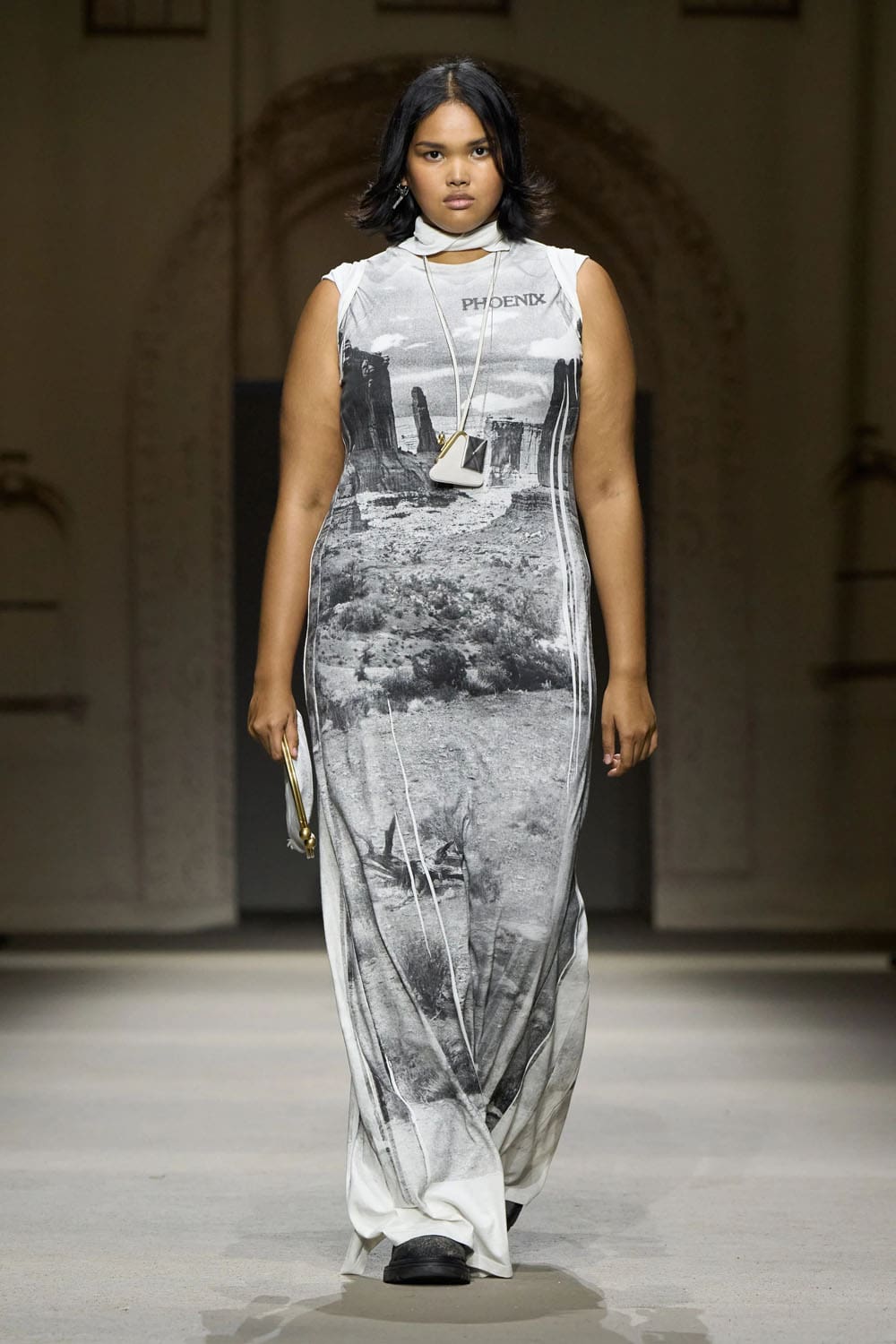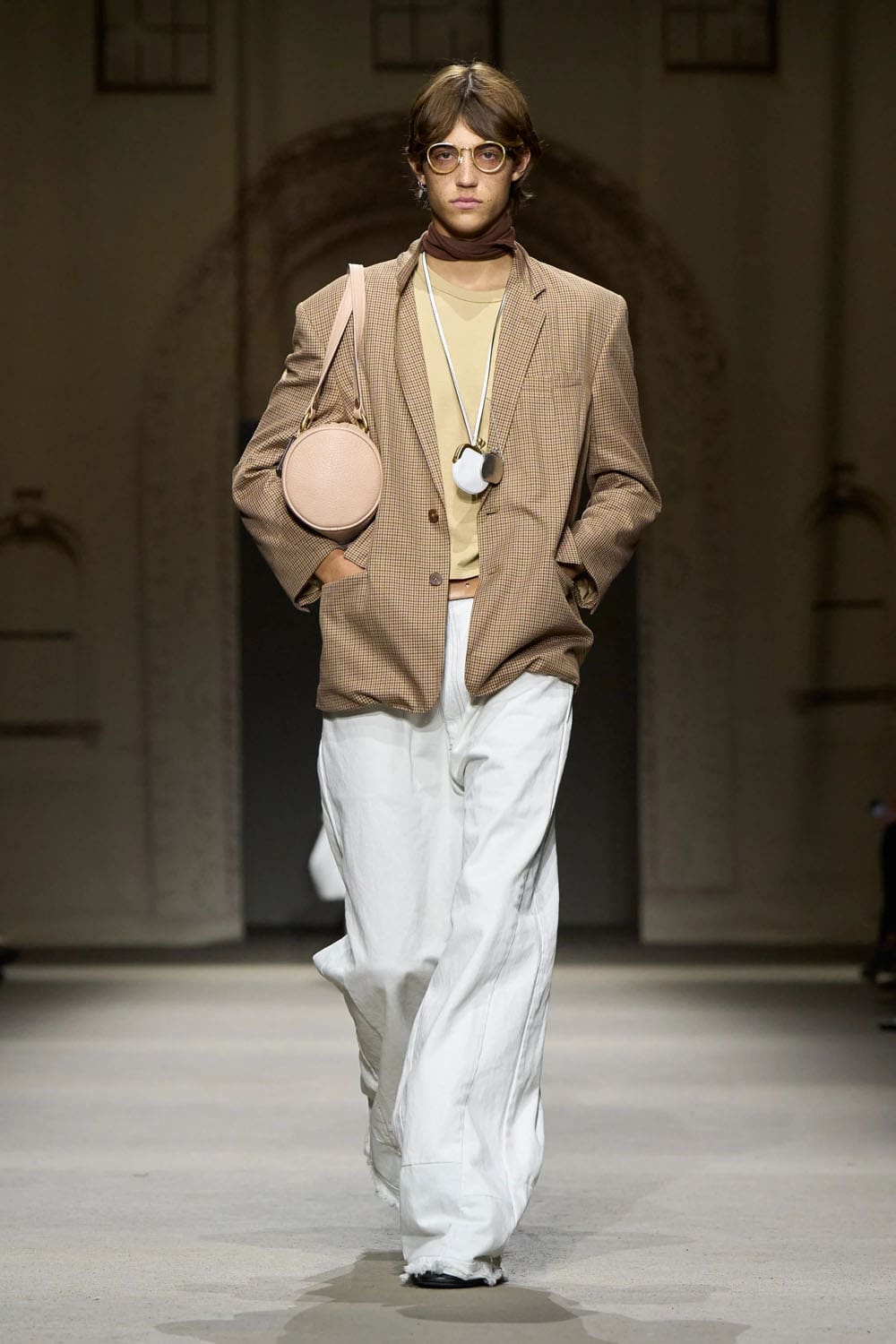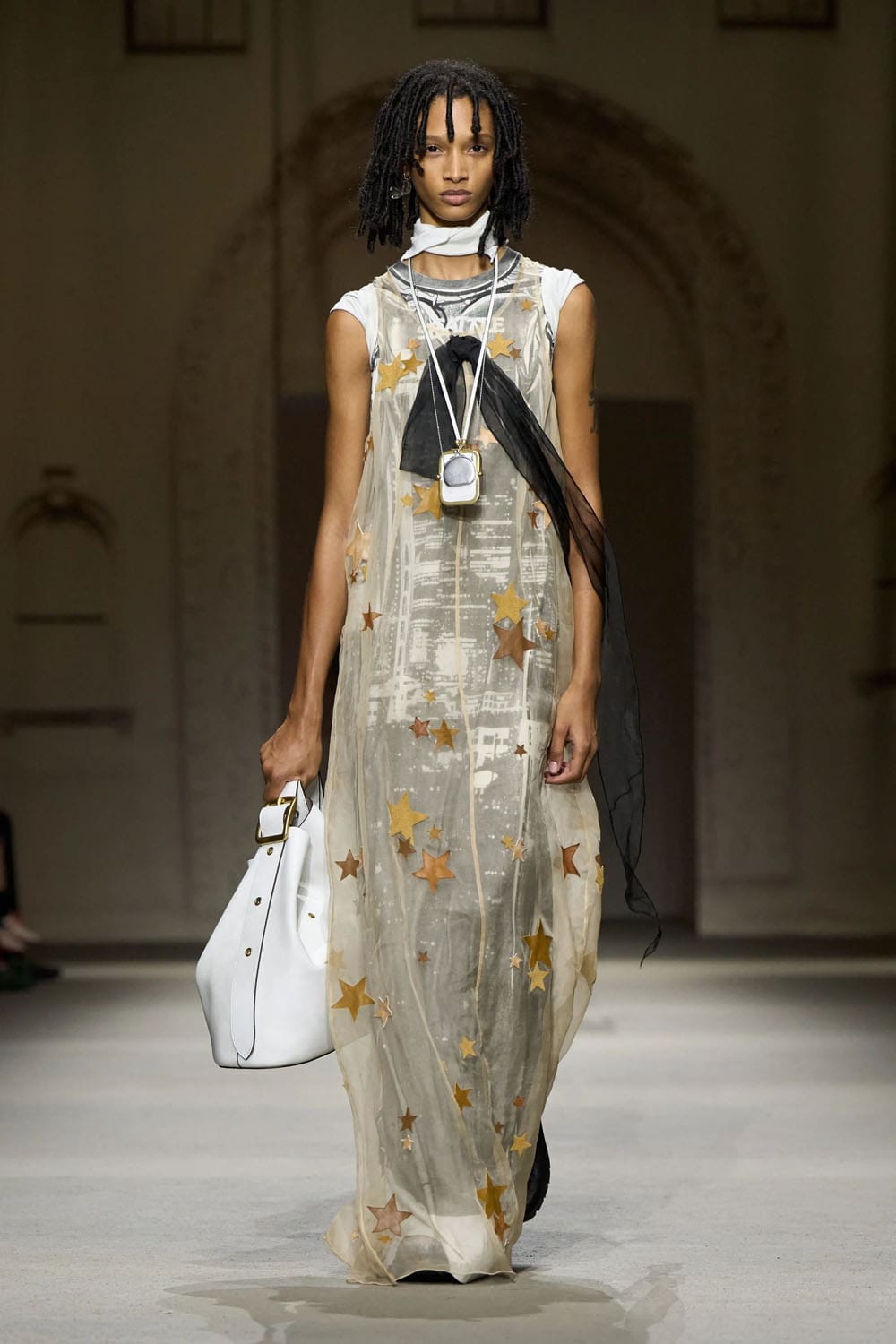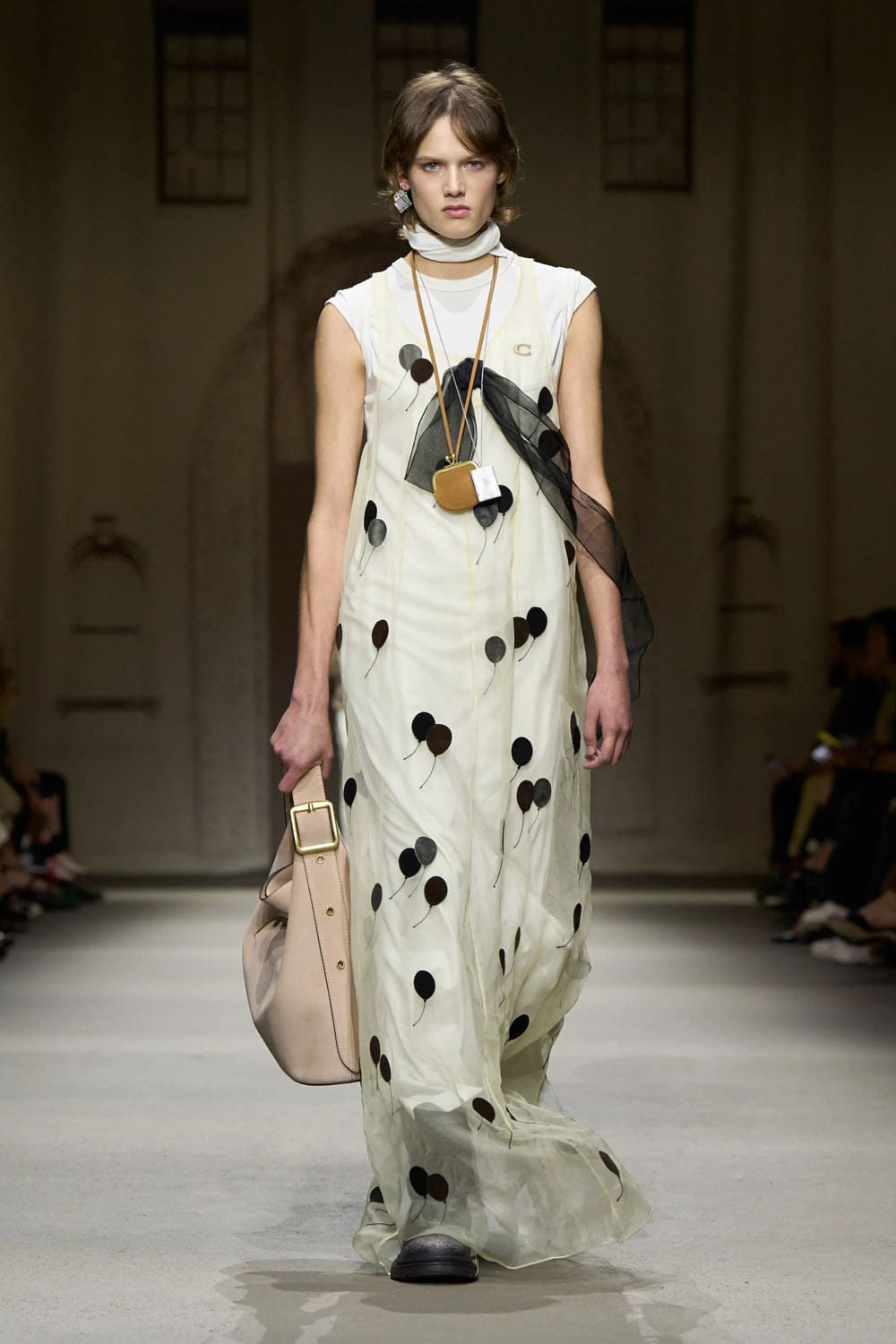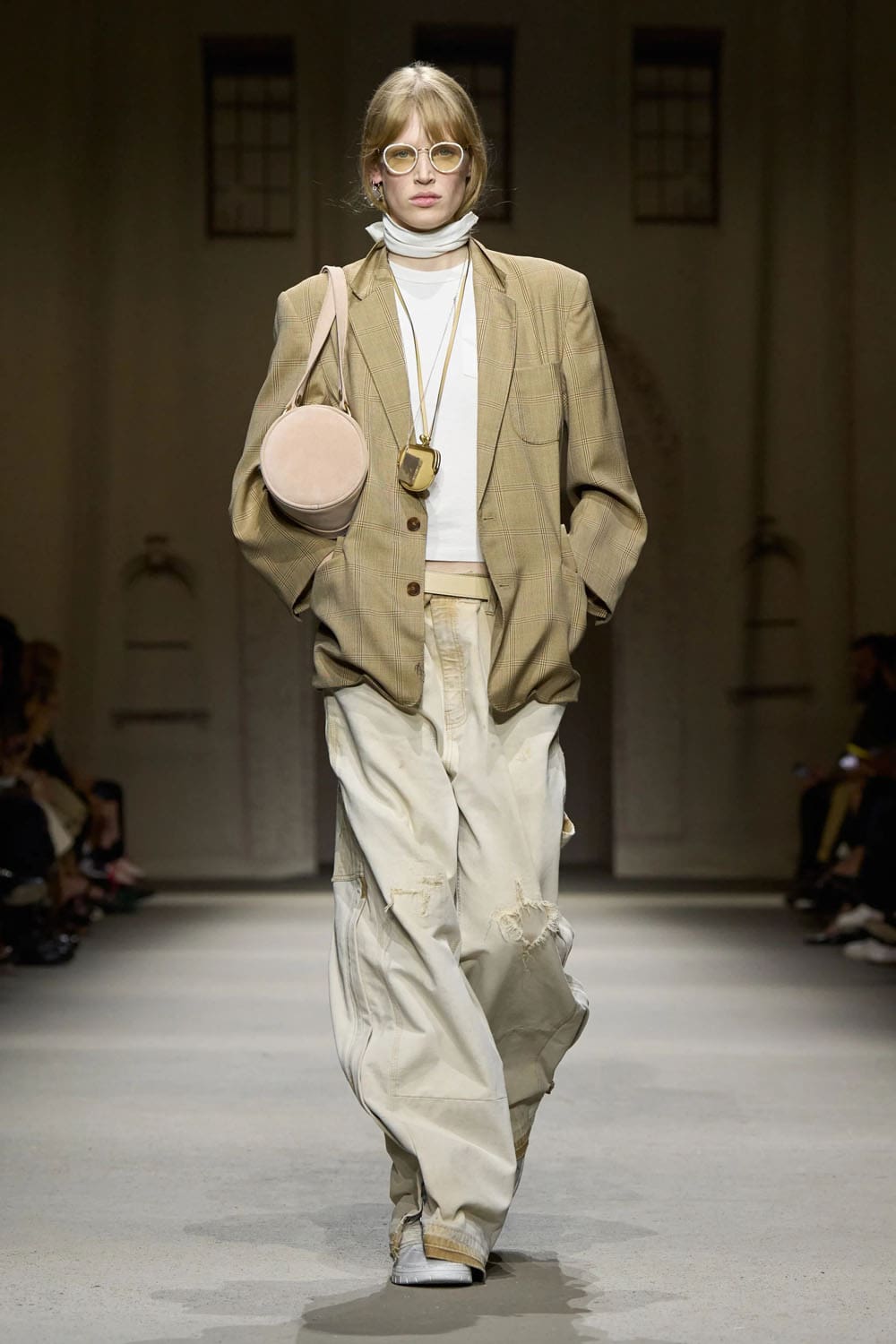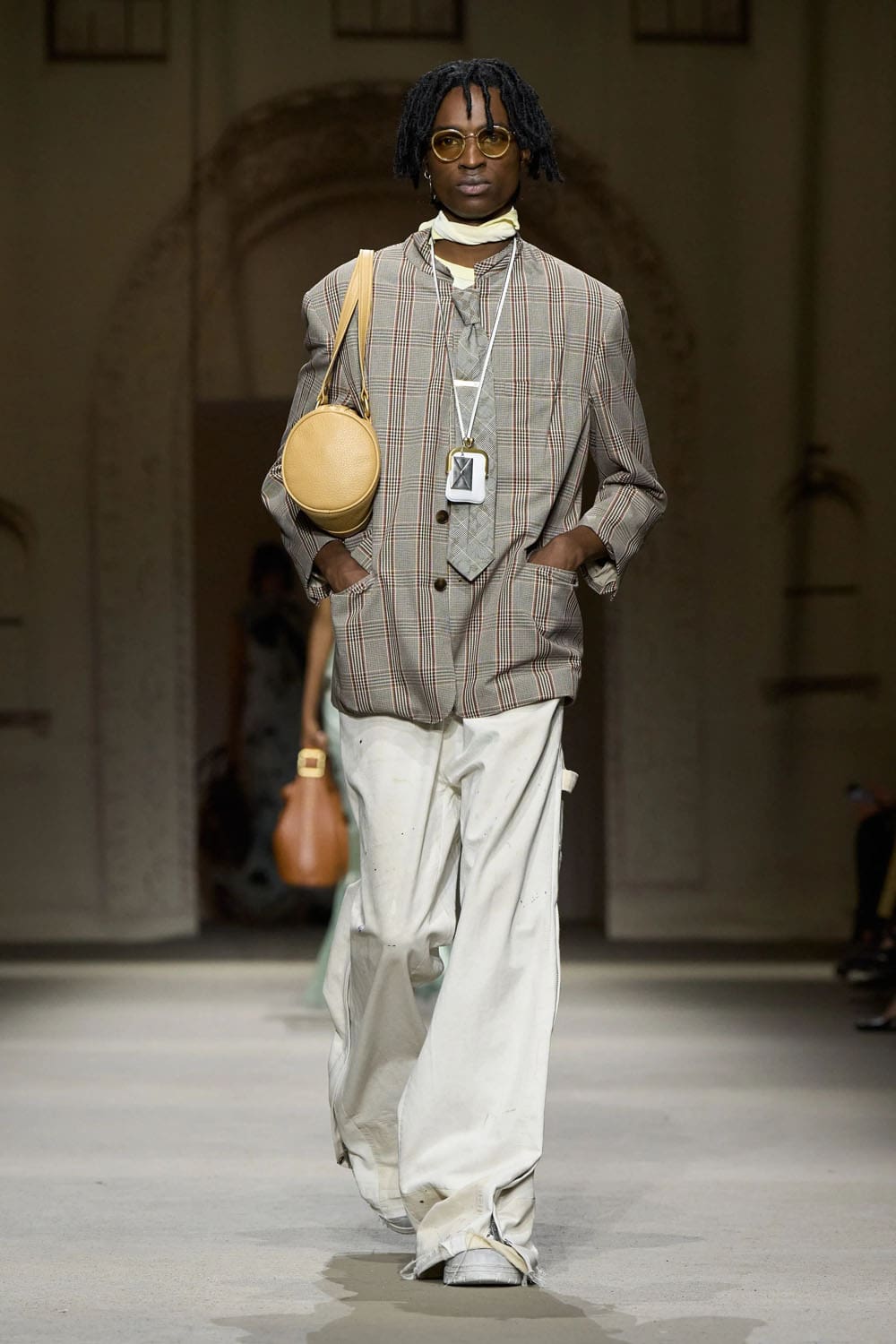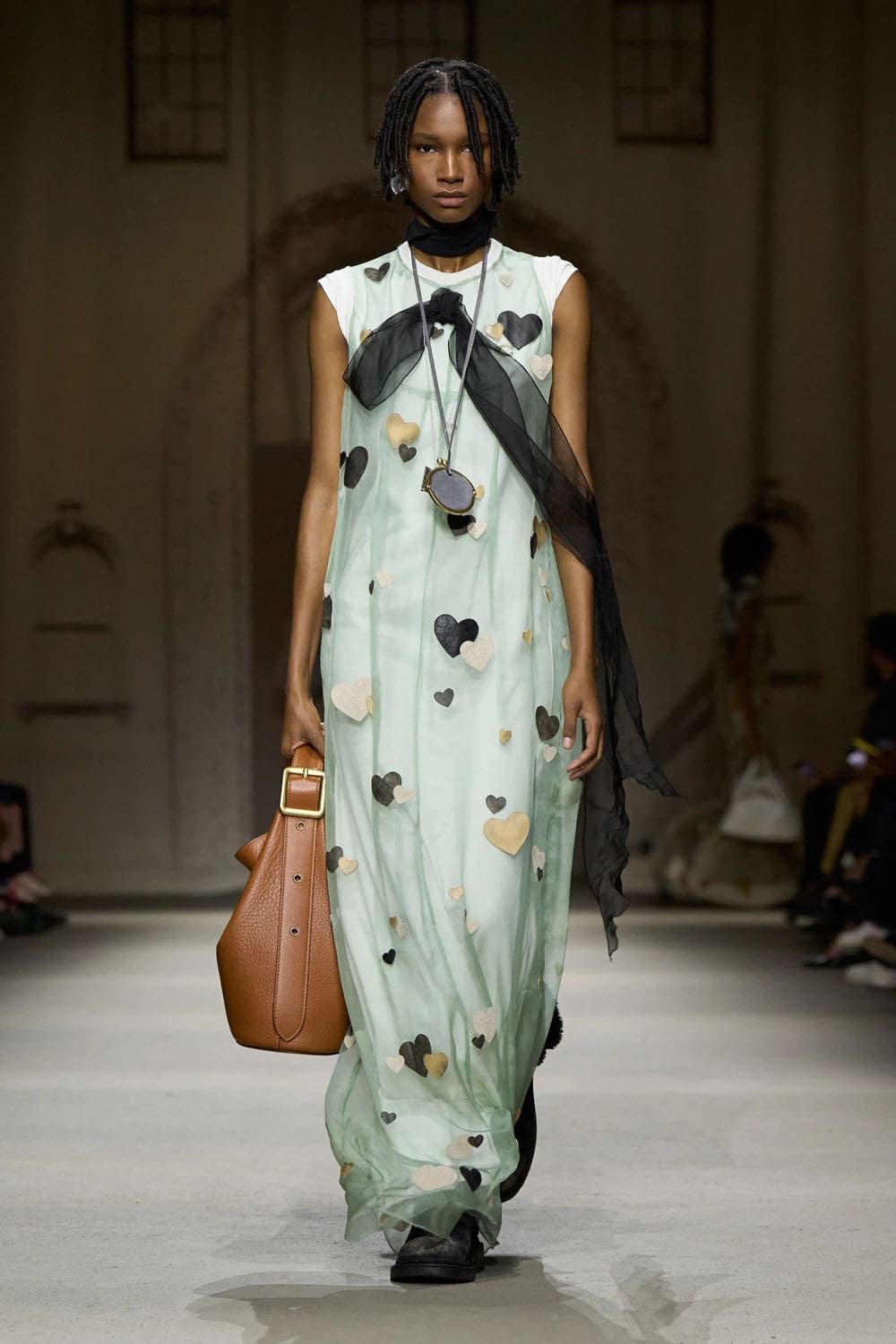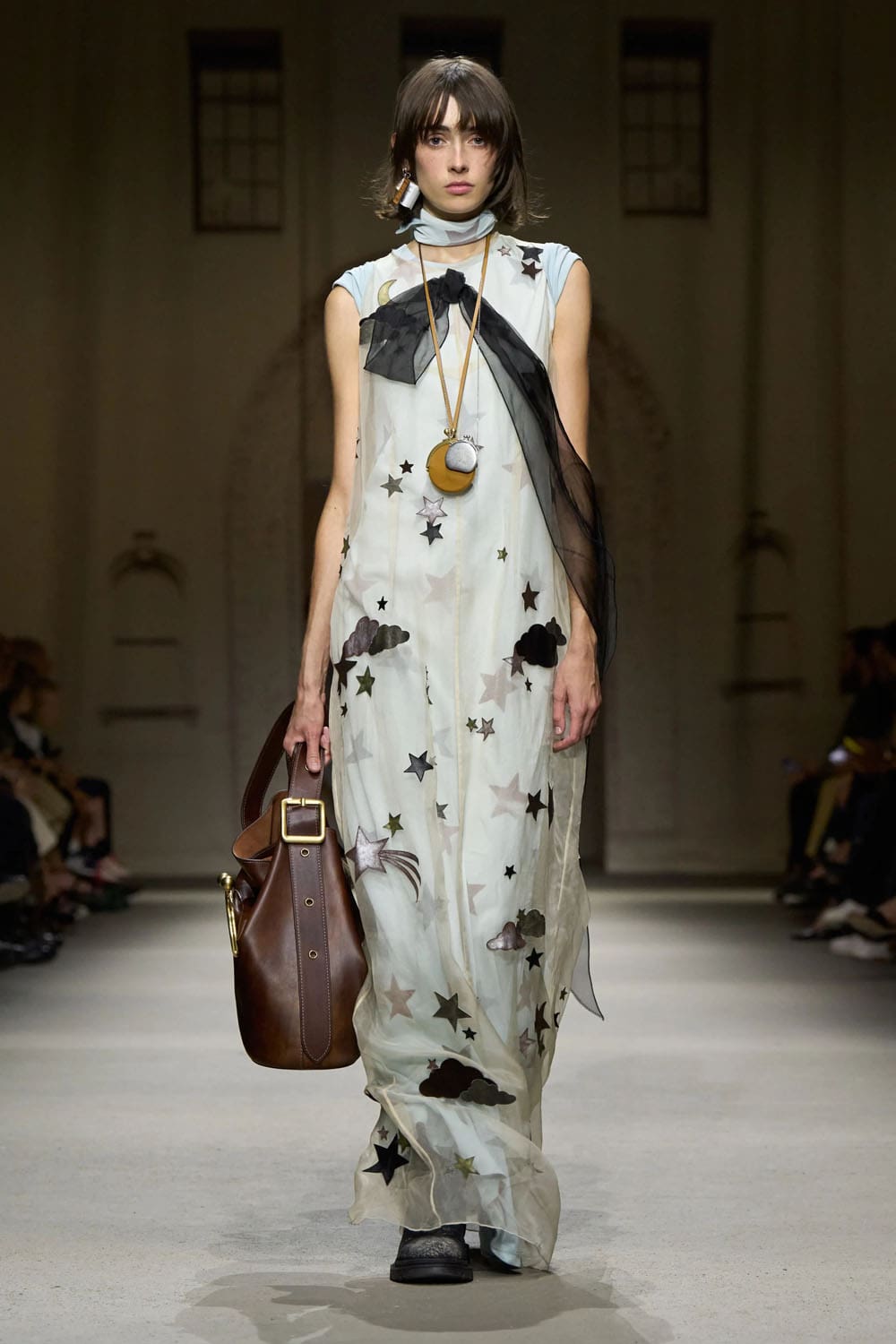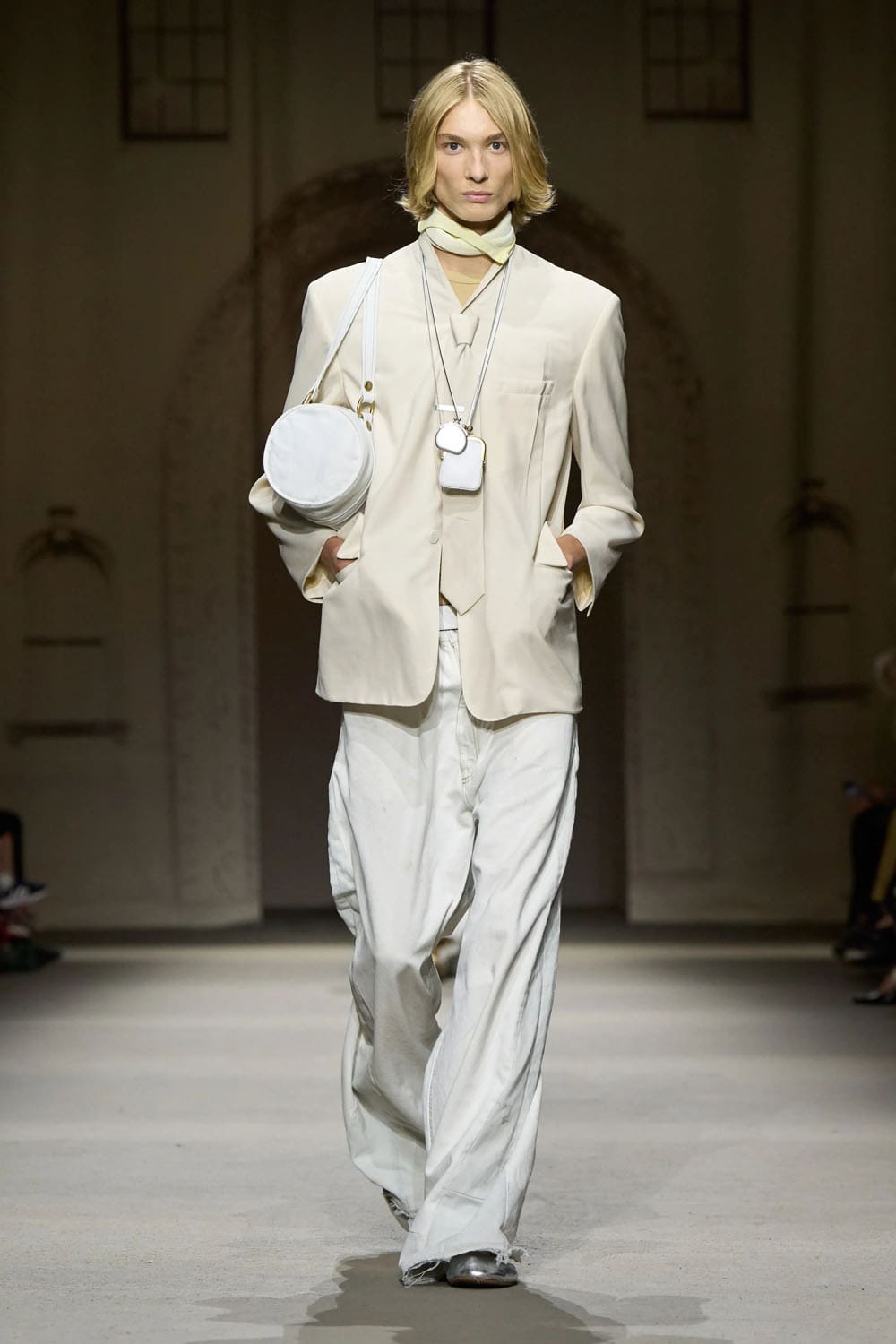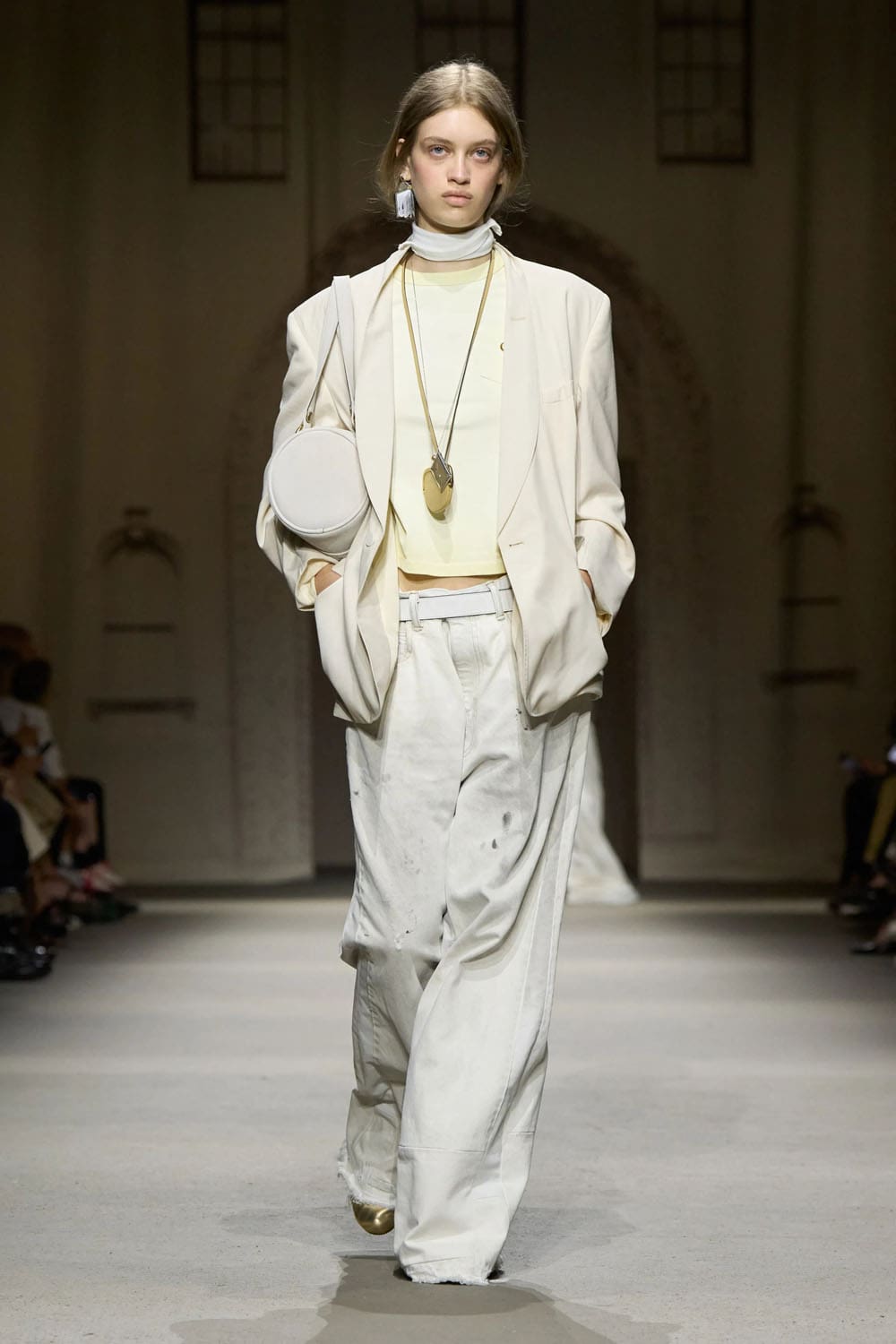Coach Spring Summer 2026 “New York as Found Object”. Story by Eleonora de Gray, Editor-in-Chief of RUNWAY MAGAZINE. Photo Courtesy: Coach.
Coach’s Spring Summer 2026 collection unfolded yesterday in New York with a clarity and restraint that stripped fashion back to its essentials. The show was less about spectacle and more about distillation: silhouettes edited to their purest form, leather cut with elemental precision, and heritage details referenced without sentimentality. In Stuart Vevers’ hands, the collection became a meditation on renewal—fashion seen, as he put it, “in the clearest, brightest morning light.”
“This season, I thought about a delicate balance of polish and shine with grit, a pairing I think of as very New York. And by grit, I mean resilience, and the beauty of how the city comes back to life every morning. The glamour of the steel and glass made more beautiful by the bleaching sunlight, the patina of time, and the buff of life in our shared city.”
Daniel Salemi
The Silhouette: Tailored, Then Set Free
The collection’s shape began in discipline. Jackets and tops carried sharp tailoring, clean shoulders, and a fitted discipline that recalled the pragmatism of New York’s workwear roots. From there, garments elongated, loosening into skirts and dresses that trailed with a fluid, ethereal movement, suggesting a release from structure into possibility. It was a duality that mirrored the city itself: hard lines and precision above, unrestrained stories unraveling at street level.
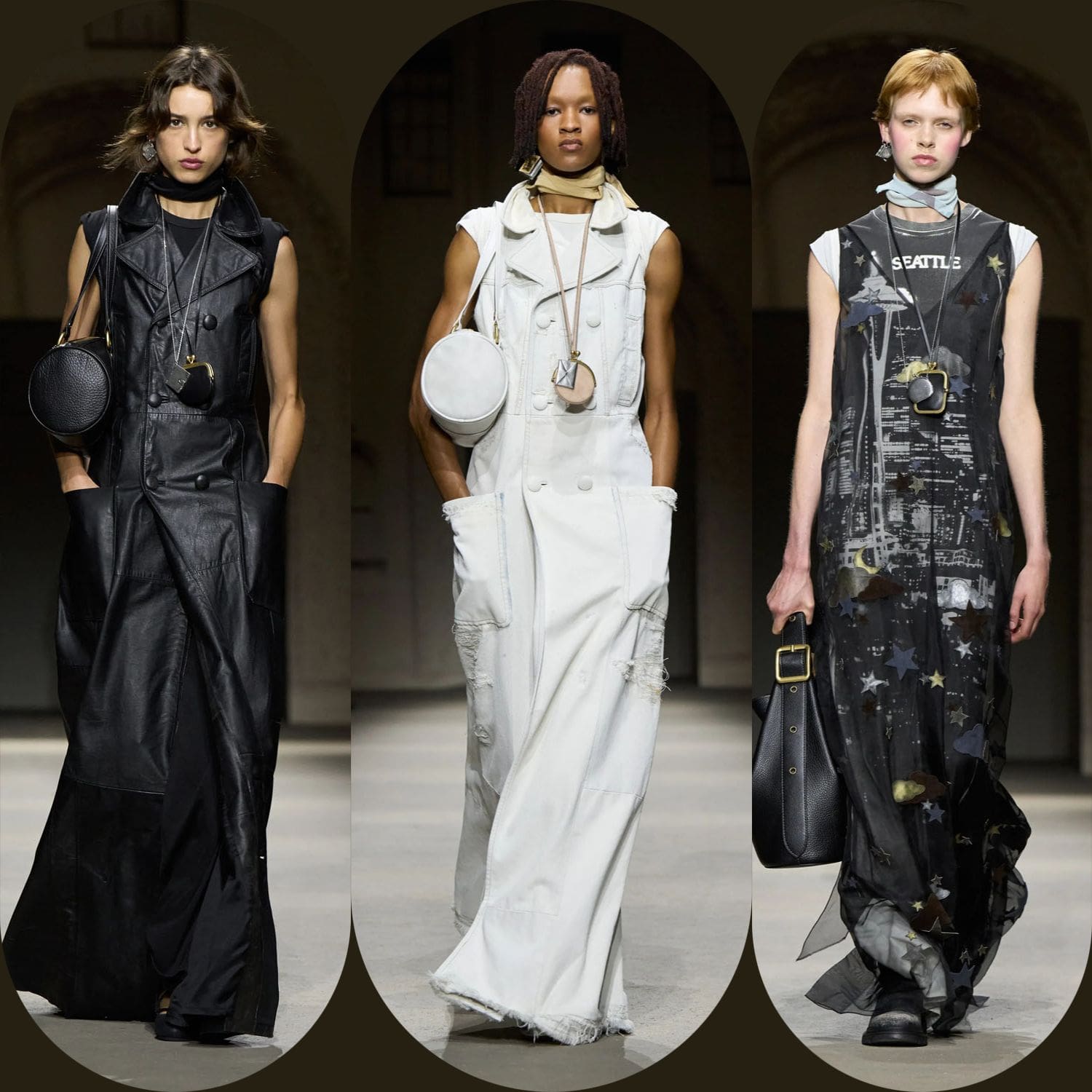
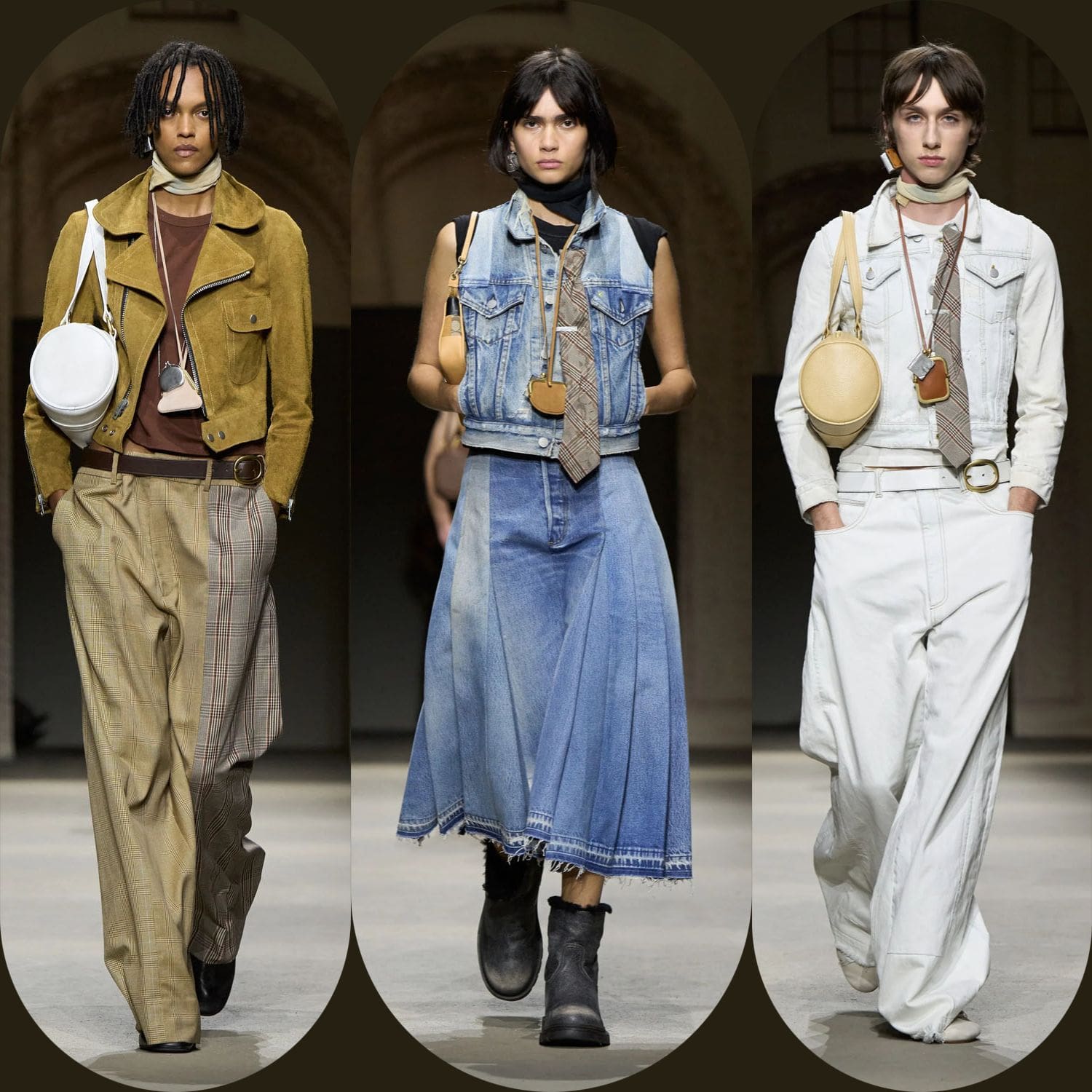
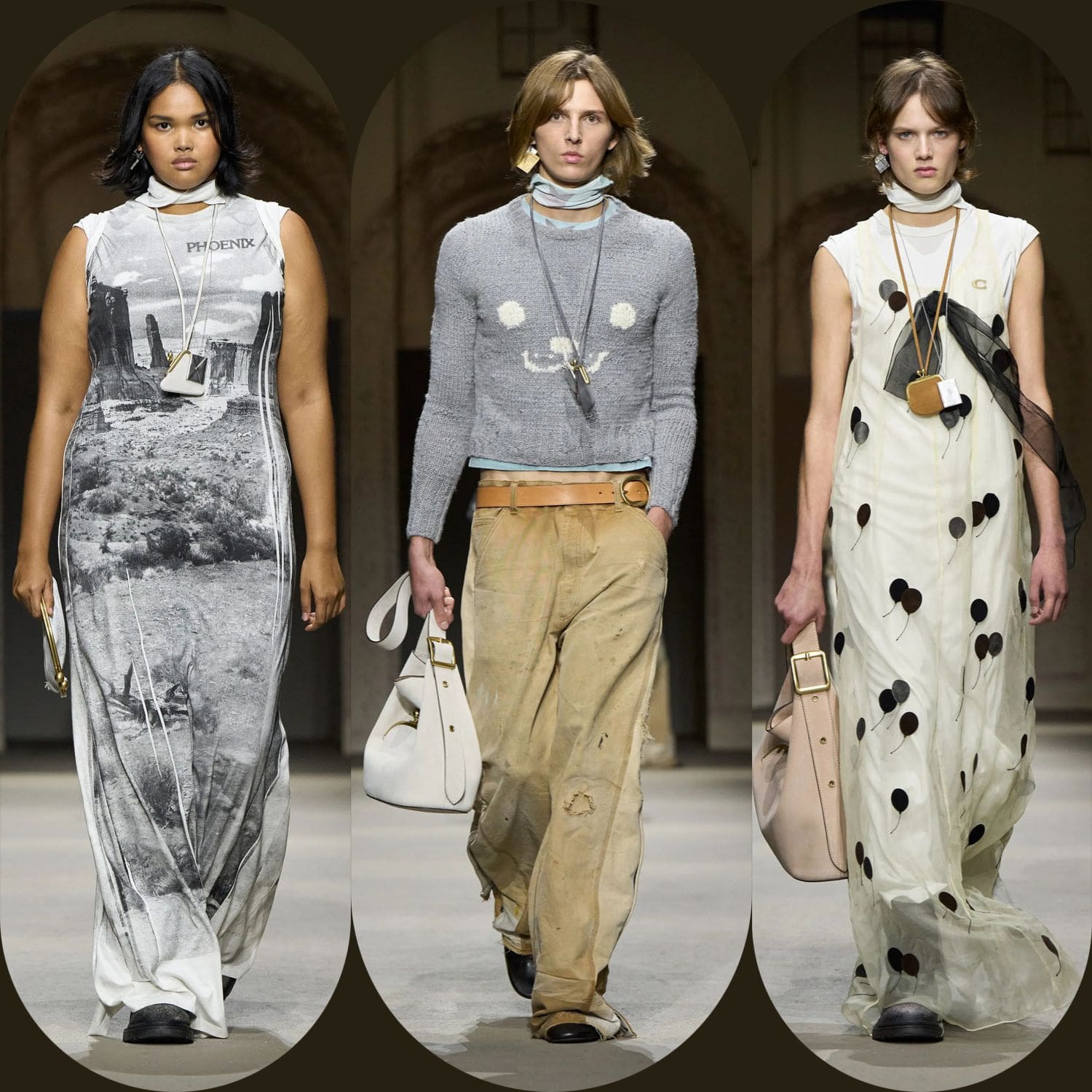
Bags and Heritage, Without Nostalgia
Accessories carried the same ethos. Bags appeared in fresh geometric forms, designed to highlight the integrity of their natural materials. Kisslock hardware—a Coach signature—was reintroduced, not as a retro flourish but as a subtle nod to continuity. This was heritage lightened of its burden, acknowledging the past without being trapped in it. The effect was both honest and optimistic, a reminder that legacy can serve as a foundation rather than a weight.
New York as Found Object
The inspiration came from the overlooked poetry of New York: a playing card in a gutter, a sticker weathered onto a lamppost, sequins scattered in the cracks of the pavement. Vevers translated these chance discoveries into fashion’s language, emphasizing the beauty of the lived-in and the discarded. Subway seats polished by decades of strangers, stoop-side boxes offering second lives to books and toys—all were reframed as emblems of shared urban memory. This was not nostalgia for a city lost, but reverence for the one still being written.
“I found inspiration in the found objects New York is so good at providing—a playing card or sequin in a gutter, a random sticker on a lamppost—strange mementos of the stories set here in the city. The intangible promise they convey about what can and has taken place is reflected in our silhouette, which starts very tailored and fitted on top and trails into something long, fluid and ethereal.
This idea of things that are used and lived-in being precious comes from New York. I thought of seats on the subway that make a new place for every rider but have seen decades of wear, and of the streetscapes we all share. Or about rediscovering treasures left out on stoops in different neighborhoods—many of the books on my bedside table or my children’s most precious toys were left out in boxes on stoops, ready for their next chapter.
We all share an image of a souvenir postcard of a city in America that acted as an invitation for us to be here. Everyone here has that dream of New York in common, and Coach is its shared heritage. I see perfectly patinaed vintage Coach bags in my local Upper West Side flea market, but I also see them in the most rarefied antique store in the Connecticut countryside or in vintage shops in New Mexico. Coach is all over America, ready to tell someone’s story and then start all over again. Coach is there to be the start of something new.”
Stuart Vevers
A Shared Heritage Across America
The show closed with a larger reflection: Coach not as a brand bound to New York alone, but as a national symbol of American memory. Vintage Coach bags turn up on Upper West Side flea markets as easily as in Connecticut antiques or New Mexico shops. They are patinaed souvenirs of personal history, ready to be claimed by a new owner and begin again. In this way, Coach positions itself not just as a luxury house, but as a cultural witness—woven into the fabric of American life, endlessly circulating, endlessly renewed.
Conclusion
Spring Summer 2026 marked a moment of editing and rediscovery. Coach has chosen clarity over excess, heritage without heaviness, and inspiration drawn not from high monuments but from the city’s sidewalks and stoops. It is fashion redefined as lived memory, as optimism, and as continuity. In Vevers’ vision, Coach is not only a brand of bags and clothing—it is a vessel for stories, ready to hold what comes next.
See All Looks Coach Spring Summer 2026
